Distinctive unit insignia
A distinctive unit insignia (DUI) is a metallic heraldic badge or device worn by soldiers in the United States Army. The DUI design is derived from the coat of arms authorized for a unit. DUIs may also be called "distinctive insignia" (DI) or, imprecisely, a "crest" or a "unit crest" by soldiers or collectors. The U.S. Army Institute of Heraldry is responsible for the design, development and authorization of all DUIs.
History

Pre-World War I Insignia. Distinctive ornamentation of a design desired by the organization was authorized for wear on the Mess Jacket uniform by designated organizations (staff corps, departments, corps of artillery, and infantry and cavalry regiments) per War Department General Order 132 dated December 31, 1902. The distinctive ornamentation was described later as coats of arms, pins and devices. The authority continued until omitted in the Army uniform regulation dated December 26, 1911.
Distinctive unit insignia. War Department Circular 161 dated 29 April 1920 authorized the use of a regimental coat of arms or badge as approved by the War Department for wear on the collar of the white uniform and the lapels of the mess jacket. War Department Circular 244, 1921 states: "It has been approved, in principle, that regiments of the Regular Army and National Guard may wear distinctive badges or trimmings on their uniforms as a means of promoting esprit de corps and keeping alive historical traditions. Various organizations which carry colors or standards have generally submitted coats of arms having certain historical significance. As fast as approved these coats of arms will for the basis for regimental colors or standards which will eventually replace the present regimental colors or standards when these wear out. The use of these coats of arms as collar ornaments in lieu of the insignia of corps, departments, or arms of service would be an example of distinctive badge to be worn by the regiment." `The first unit to wear this insignia was the 51st Artillery which received approval for wear on March 18, 1922. It was designed by Master Gunner and Master Sergeant Edward C. Kuhn, the artist responsible for creating all authorized coats of arms and distinctive unit insignia at the time.
Present. Up until 1965, only regiments and separate battalions were authorized a coat of arms and distinctive units insignia. Now all major commands, field hospitals, corps, logistics commands and certain other units – groups, for example – are authorized distinctive unit insignia.
Design


The unit commanding officer requests approval of a distinctive unit insignia. A check is made by the Institute of Heraldry to determine the availability of a current copy of the lineage and honor statement and/or history for the unit. If it is not available, one is requested from the United States Army Center of Military History. The unit's history is reviewed to determine if the unit may inherit a previously approved distinctive unit insignia or if a new design should be made.[1]
If a new design is to be made, careful study is made of the history and battle honors of the unit. The most important decorations, honors, combat service and missions are represented in the design of the insignia. Sometimes two centuries of history are condensed into symbolism for one distinctive unit insignia. A proposed design is created and sent to the commanding officer for review and concurrence. Upon concurrence by the unit commander an official letter of approval of the distinctive unit insignia is sent to the unit.
Manufacturing drawings and specifications are sent to a certified manufacturer which provides samples of the finished distinctive unit insignia to the Institute of Heraldry for approval. Once approved the manufacturer may produce this insignia. Each manufacturer has an identifying hallmark assigned by the Institute of Heraldry which is applied to the back of the insignia.
The shield shape design is used to identify color bearing organizations (for example, regiments and battalions). Other design patterns will be used for non-color bearing units. The design is based on war service, assignment or accomplishments. Cartoon characters or logos are not authorized as design elements. Symbols are to represent mission rather than actual equipment as equipment becomes out-of-date. Unit designations, numerals, letters, geographical outlines, reproductions of other insignia will not be included as part of the design.
Once a distinctive unit insignia is approved, it is changed only when a heraldic or historical error is found. A modification of unit designation or mission does not permit a change to the DUI design. As a result, DUIs tend to further reflect the historic roots of a unit. For example, many older Military Intelligence battalions' DUIs feature teal blue rather than oriental blue, having been designed for Army Security Agency units which were designated as branch-immaterial. Likewise, those that began as Signals units typically feature orange. The 211th Military Police Battalion provides an example of a unit changing branches without changing insignia, having been assigned to six different branches during its existence. Color-bearing battalions and regiments continue to have insignia without the shield shape if they were formerly non-color-bearing units when the insignia was approved; this includes not only former groups and brigades that were downsized, but as well flexible battalions (i.e., battalions composed of variable attached numbered companies, rather than fixed-TOE battalions composed of lettered companies which are organic to the battalion) which gained coats of arms and thus colors in the late 1990s, long after their DUIs were already approved.
Authorization
Distinctive unit insignia (DUI) of a design approved by The Institute of Heraldry, U.S. Army, are authorized under Paragraph 28-22 of Army Regulation 670-1.[2]
Wear

.jpg.webp)
The distinctive unit insignia of the unit to which the soldier is assigned are worn as follows:[3]
- On the beret flash of enlisted personnel
- On the breast patch of the black pullover sweater
- On the shoulder loops of the enlisted personnel's Army Service Uniform jacket (when not worn in dress configuration) centered on the shoulder loops an equal distance from the outside shoulder seam to the outside edge of the button, with the base of the insignia toward the outside shoulder seam.
- Above the nameplate on the Class A and Class B service uniforms, when the DUI is worn in lieu of a regimental distinctive insignia (RDI). At the soldier's option the RDI, the DUI of their current assignment or the DUI of a previous assignment may be worn above the nameplate. If worn, the RDI for whole branch regiments (MP, Signal, Quartermaster) must be that of the soldier's current career field.[3]
When a DUI is authorized, all personnel assigned to the organization wear the insignia, except general officers, the Sergeant Major of the Army and the Senior Enlisted Advisor to the Chairman. General officers wear their regimental distinctive insignia (RDI) on the black pullover sweater. The Sergeant Major of the Army and Senior Enlisted Advisor to the Chairman (if a soldier) wear, respectively, the SMA and SEAC collar insignia in lieu of the DUI on their pullover sweaters and berets, but their epaulets are bare.
Units not listed in AR 670-1 (other than USAG) may request a DUI be authorized if the unit has at least 500 military assigned (250 for Department of the Army operating agencies). The Army element of joint commands may be authorized a DUI if the Army element has at least 500 Army personnel.[4]
Examples
Adjutant General
 21st Replacement Battalion
21st Replacement Battalion
"Strength and Service" 43rd Adjutant General Battalion
43rd Adjutant General Battalion
"Soldiers for Freedom" 120th Adjutant General Battalion
120th Adjutant General Battalion
"We Set the Example" 298th Army Band
298th Army Band 328th Personnel Services Battalion
328th Personnel Services Battalion
"Support and Service" 360th Replacement Battalion
360th Replacement Battalion
"Support to Win" 369th Adjutant General Battalion
369th Adjutant General Battalion
"Army Pride" 556th Personnel Services Battalion
556th Personnel Services Battalion
"Service Always First"
Alphabetical units
 United States Army Civil Affairs and Psychological Operations Command
United States Army Civil Affairs and Psychological Operations Command
"By Sword, Deed, and Word" United States Army Combined Arms Support Command
United States Army Combined Arms Support Command
"Support Starts Here"
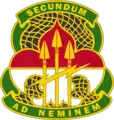
 United States Army Forces Command
United States Army Forces Command
"Freedom's Guardian" United States Army Futures Command
United States Army Futures Command
"Forge the future" United States Army Human Resources Command
United States Army Human Resources Command
"Soldiers First" United States Army Installation Management Command
United States Army Installation Management Command
"Sustain, Support, Defend" United States Army Materiel Command
United States Army Materiel Command
"Arsenal For The Brave"

 United States Army Parachute Team
United States Army Parachute Team
"Golden Knights"
 United States Army Reserve Careers Group
United States Army Reserve Careers Group
"Enihilum Parum"
(Never Enough) United States Army Reserve Command
United States Army Reserve Command
"Twice the Citizen" United States Army Sergeants Major Academy
United States Army Sergeants Major Academy
"Ultima"
(Farthest) United States Army Space and Missile Defense Command
United States Army Space and Missile Defense Command
"Securing the High Ground"
 United States Defense Language Institute–Army element
United States Defense Language Institute–Army element United States Military Academy
United States Military Academy
Faculty & Staff United States National Guard Bureau–Army element
United States National Guard Bureau–Army element United States Space Command–Army element
United States Space Command–Army element
"Lutum Ad Spatium" United States Special Operations Command Central–Army element
United States Special Operations Command Central–Army element
 United States Special Operations Command North–Army element
United States Special Operations Command North–Army element United States Special Operations Command Pacific–Army element
United States Special Operations Command Pacific–Army element
"Guardians Of The Pacific" United States Forces Korea–Army element
United States Forces Korea–Army element
"Supporting Defense"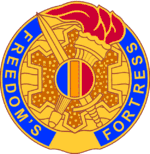 United States Army Training and Doctrine Command
United States Army Training and Doctrine Command
"Freedom's Fortress" Asymmetric Warfare Group
Asymmetric Warfare Group
"Think. Adapt. Anticipate."
 Fort Dix
Fort Dix
"The Ultimate Weapon" Fort Jackson
Fort Jackson
"Victory Starts Here"
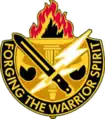

Air Defense Artillery
 U.S. Army Air Defense Center and Air Defense Artillery School
U.S. Army Air Defense Center and Air Defense Artillery School
"Militant"
 32nd Army Air and Missile Defense Command
32nd Army Air and Missile Defense Command
"Swift and Sure" 94th Army Air and Missile Defense Command
94th Army Air and Missile Defense Command
"First Line of Defense" 11th Air Defense Artillery Brigade
11th Air Defense Artillery Brigade
"Train to Fight!" 31st ADA Brigade
31st ADA Brigade
"Ready and Vigilant" 35th Air Defense Artillery Brigade
35th Air Defense Artillery Brigade
"Ready in Defense" 38th ADA Brigade
38th ADA Brigade
"By Valor and Power"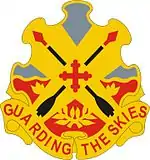 69th Air Defense Artillery Brigade
69th Air Defense Artillery Brigade
"Guarding the Skies" 108th Air Defense Artillery Brigade
108th Air Defense Artillery Brigade
"Deeds above Words!" 164th Air Defense Artillery Brigade
164th Air Defense Artillery Brigade
"Blazing Skies!"
 263rd Air Defense Artillery Brigade
263rd Air Defense Artillery Brigade
"Duty Honor Excellence" 678th Air Defense Artillery Brigade
678th Air Defense Artillery Brigade
"For Freedom, We Defend!"
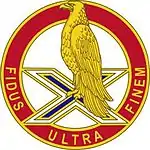









 56th ADA Regiment
56th ADA Regiment
"Night Hides Not" 57th Air Defense Artillery Group
57th Air Defense Artillery Group
"Veto"



 67th Air Defense Artillery Group
67th Air Defense Artillery Group
"Memor Et Fidelis"
(Mindful and Faithful)

 204th ADA Regiment
204th ADA Regiment
"Dum Vigilo Paro"
(While I Watch, I Prepare)

 214th ADA Regiment
214th ADA Regiment
"We Hear and Strike" 251st ADA Regiment
251st ADA Regiment
"We Aim to Hit" 263rd Air Defense Artillery Regiment
263rd Air Defense Artillery Regiment
"Unsurrendered" 369th ADA Regiment
369th ADA Regiment
"Don't Tread On Me" 517th Air Defense Artillery Regiment
517th Air Defense Artillery Regiment
"We Sweep the Sky" 562nd Air Defense Artillery Regiment
562nd Air Defense Artillery Regiment
"Tuebor"
(I Will Protect) 4th Air Defense Artillery Battalion
4th Air Defense Artillery Battalion 39th Air Defense Artillery Battalion
39th Air Defense Artillery Battalion
"Hit Hard and Sure" 94th Air Defense Artillery Battalion
94th Air Defense Artillery Battalion
"The Thunderbolt Defenders" 441st Air Defense Artillery Battalion
441st Air Defense Artillery Battalion
"Four For One" 703rd Antiaircraft Artillery Gun Battalion
703rd Antiaircraft Artillery Gun Battalion
"To the Last Man"
Army
 United States Army Alaska
United States Army Alaska
"America's Arctic Warriors"
 First United States Army
First United States Army
"First In Deed"
 Third United States Army / United States Army Central
Third United States Army / United States Army Central
"Tertia Semper Prima"
(Third Always First) Fourth United States Army
Fourth United States Army
"Leadership And Integrity" Fifth United States Army / United States Army North
Fifth United States Army / United States Army North
"Strength of the Nation!" Sixth United States Army / United States Army South
Sixth United States Army / United States Army South
"Born of War" United States Army South
United States Army South
"Defense and Fraternity" Seventh United States Army / United States Army Europe
Seventh United States Army / United States Army Europe
"Pyramid of Power" United States Army Pacific
United States Army Pacific
"One Team" Eighth United States Army
Eighth United States Army
"Pacific Victors" Ninth United States Army / United States Army Africa
Ninth United States Army / United States Army Africa
"Bringing the Army Team to Africa"
Armor
 United States Army Armor School
United States Army Armor School
"Forge the Thunderbolt"
 4th Armored Division Combat Command B
4th Armored Division Combat Command B 4th Armored Division Combat Command C
4th Armored Division Combat Command C 4th Armored Group
4th Armored Group 5th Armored Brigade
5th Armored Brigade
"Dagger Brigade" 30th Armored Brigade Combat Team
30th Armored Brigade Combat Team
"Old Hickory" 155th Armored Brigade Combat Team
155th Armored Brigade Combat Team
"Dixie Thunder" 177th Armored Brigade
177th Armored Brigade
"Spearhead to Victory"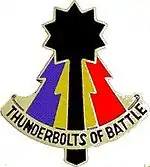 194th Armored Brigade
194th Armored Brigade
"Thunderbolts of Battle" 20th Armored Regiment
20th Armored Regiment
"To the Last Man" 32nd Armor Regiment
32nd Armor Regiment
"Victory or Death".jpg.webp) 33rd Armor Regiment
33rd Armor Regiment
"Men of war" 34th Armor Regiment
34th Armor Regiment
"Fear God, Dreadnaught" 35th Armor Regiment
35th Armor Regiment
"Vincere Vel Mori"
(To Conquer or Die) 37th Armor Regiment
37th Armor Regiment
"Courage Conquers" 40th Armored Regiment
40th Armored Regiment
"By Force and Valor" 63rd Armor Regiment
63rd Armor Regiment
"Seek, Strike, Destroy" 64th Armor Regiment
64th Armor Regiment
"We pierce"
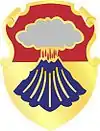


 70th Armor Regiment
70th Armor Regiment
"Strike Swiftly"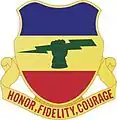 73rd Armor
73rd Armor
"Honor Fidelity Courage".gif)

 82nd Armor Regiment
82nd Armor Regiment
"Temeritas" 103rd Armor Regiment
103rd Armor Regiment
"Expedite"
 145th Armored Regiment
145th Armored Regiment
"Excel" 149th Armor Regiment
149th Armor Regiment
"Men and Steel"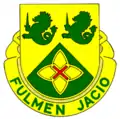 185th Armor Regiment
185th Armor Regiment
"Fulmen Jacio"
(I Hurl The Thunderbolt) 194th Armor Regiment
194th Armor Regiment
"The Arm Of Decision" 252nd Armor Regiment
252nd Armor Regiment
"Ready, Poised, Decisive" 303rd Armored Regiment
303rd Armored Regiment
"Always in the Lead" 309th Tank Regiment
309th Tank Regiment
"Ubique Impavidi"
(In All Things Undaunted)
 141st Heavy Tank Battalion
141st Heavy Tank Battalion
"Vivions Vi Velocique" 321st Tank Battalion
321st Tank Battalion
"Ubique Impavidi"
"In All Things Undaunted"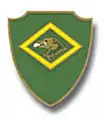 322nd Heavy Tank Battalion
322nd Heavy Tank Battalion
 743rd Tank Battalion
743rd Tank Battalion
"We Keep the Faith" 745th Tank Battalion
745th Tank Battalion
"Our Tracks Lead To Victory"
 761st Tank Battalion
761st Tank Battalion
"Come Out Fighting"
Aviation

 1st Aviation Brigade
1st Aviation Brigade
"Above the Best"
 16th Combat Aviation Brigade
16th Combat Aviation Brigade
"Born In Battle"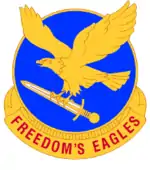 17th Combat Aviation Brigade
17th Combat Aviation Brigade
"Freedom's Eagles" 18th Combat Aviation Brigade
18th Combat Aviation Brigade
"Black Barons" 63rd Theater Aviation Brigade
63rd Theater Aviation Brigade
"Unbridled Thunder" 77th Combat Aviation Brigade
77th Combat Aviation Brigade
"Force From Above" 110th Combat Aviation Brigade
110th Combat Aviation Brigade
"Will do" 159th Combat Aviation Brigade
159th Combat Aviation Brigade
"Press On" 166th Aviation Brigade
166th Aviation Brigade
"Wings in the West" 185th Combat Aviation Brigade
185th Combat Aviation Brigade
"Above Valor and Courage" 244th Aviation Brigade
244th Aviation Brigade
"Wings of The Hawk" 15th Aviation Group
15th Aviation Group
"Flying Mustangs"



 10th Aviation Regiment
10th Aviation Regiment
"Soldiers Of The Sky" 11th Aviation Regiment
11th Aviation Regiment
"Exempla Proponere"
(Be An Example) 13th Aviation Regiment
13th Aviation Regiment
"Swift and Deadly" 14th Aviation Regiment
14th Aviation Regiment
"Versatility"

 82nd Aviation Regiment
82nd Aviation Regiment
"Ground Air Mobility" 101st Aviation Regiment
101st Aviation Regiment
"Wings of the Eagle"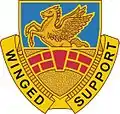 104th Aviation Regiment
104th Aviation Regiment
"Winged Support" 106th Aviation Regiment
106th Aviation Regiment
"Commitment to Excellence" 108th Aviation Regiment
108th Aviation Regiment
"We Defend from Above"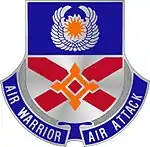 111th Aviation Regiment
111th Aviation Regiment
"Air Warrior Air Attack" 112th Aviation Regiment
112th Aviation Regiment
"Arrows In Flight" 114th Aviation Regiment
114th Aviation Regiment
"Eagles of Liberty" 123rd Aviation Regiment
123rd Aviation Regiment 126th Aviation Regiment
126th Aviation Regiment
"Faith Flight Fidelity" 130th Aviation Regiment
130th Aviation Regiment
"The Eyes of Command"- 131st Aviation Regiment
"Where Eagles Dare"  135th Aviation Regiment
135th Aviation Regiment
"Poised to Strike" 137th Aviation Regiment
137th Aviation Regiment
"Maintaining Freedom" 140th Aviation Regiment
140th Aviation Regiment
"Cura Et Perfectio"
(Accuracy and Perfection) 142nd Aviation Regiment
142nd Aviation Regiment
"Over the Rainbow" 147th Aviation Regiment
147th Aviation Regiment
"Lyncei Agminis" 149th Aviation Regiment
149th Aviation Regiment
"Beyond and Above"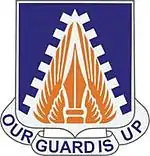 150th Aviation Regiment
150th Aviation Regiment
"Our Guard is Up"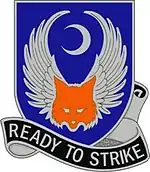 151st Aviation Regiment
151st Aviation Regiment
"Ready to Strike" 158th Aviation Regiment
158th Aviation Regiment
"Challenge" 159th Aviation Regiment
159th Aviation Regiment
"Press On" 160th Special Operations Aviation Regiment
160th Special Operations Aviation Regiment
"Night Stalkers"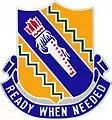 168th Aviation Regiment
168th Aviation Regiment
"Ready When Needed" 169th Aviation Regiment
169th Aviation Regiment
"Gravissima Levans"
(Rising The Highest) 171st Aviation Regiment
171st Aviation Regiment
"Support from Above" 183rd Aviation Regiment
183rd Aviation Regiment
"Aves Praedae"
(Birds of Prey) 185th Aviation Regiment
185th Aviation Regiment
"Fighting for the Force" 189th Aviation Regiment
189th Aviation Regiment
"Sounds of Freedom" 193rd Aviation Regiment
193rd Aviation Regiment
"Ku Wela Ka Hao" 207th Aviation Regiment
207th Aviation Regiment
"Flying to the Future" 211th Aviation Regiment
211th Aviation Regiment
"Wings of the Rockies" 212th Aviation Regiment
212th Aviation Regiment
"Wings of Freedom" 214th Aviation Regiment
214th Aviation Regiment
"Up Tight" 222nd Aviation Regiment
222nd Aviation Regiment 223rd Aviation Regiment
223rd Aviation Regiment 224th Aviation Regiment
224th Aviation Regiment
"Free Dominion"
 228th Aviation Regiment
228th Aviation Regiment
"Winged Warriors" 229th Aviation Regiment
229th Aviation Regiment
"Winged Assault" 238th Aviation Regiment
238th Aviation Regiment
"Eye of the Cyclone" 285th Aviation Regiment
285th Aviation Regiment
"Desert Hawks"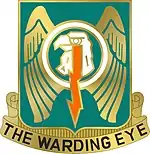 501st Aviation Regiment
501st Aviation Regiment
"The Warding Eye" 641st Aviation Regiment
641st Aviation Regiment
"Enduring Vigilance" 16th Aviation Battalion
16th Aviation Battalion
"Parati-Respondere"
(Ready to Respond) 18th Aviation Battalion
18th Aviation Battalion
"Swift Mobility"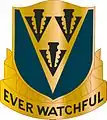 24th Aviation Battalion
24th Aviation Battalion
"Ever Watchful"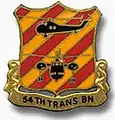 54th Transportation Battalion
54th Transportation Battalion 503rd Aviation Battalion
503rd Aviation Battalion
"Vision Support and Succor" 504th Aviation Battalion
504th Aviation Battalion
"By Our Deeds Alone" 59th Air Traffic Control Battalion
59th Air Traffic Control Battalion
"Voice of Control" 2nd Aviation Company (Light Transportation)
2nd Aviation Company (Light Transportation)
"Orville the Otter" 26th Transportation Company
26th Transportation Company
Battlefield surveillance
Note: This is a list of units not otherwise reassigned when the US Army disbanded its battlefield surveillance brigades.
 142nd Battlefield Surveillance Brigade
142nd Battlefield Surveillance Brigade
"Truth through Vigilance" 297th Battlefield Surveillance Brigade
297th Battlefield Surveillance Brigade
"Arctic Warriors"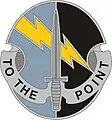 560th Battlefield Surveillance Brigade
560th Battlefield Surveillance Brigade
"To The Point"
Cavalry
 1st Cavalry Division
1st Cavalry Division
"The First Team!" 4th Cavalry Brigade
4th Cavalry Brigade
"Train for Combat" 116th Cavalry Brigade Combat Team
116th Cavalry Brigade Combat Team
"Move Strike Destroy"


 3rd Cavalry Regiment
3rd Cavalry Regiment
"Brave Rifles"
 5th Cavalry Regiment
5th Cavalry Regiment
"Loyalty Courage"
 7th Cavalry Regiment
7th Cavalry Regiment
"Garry Owen" 8th Cavalry Regiment
8th Cavalry Regiment
"Honor and Courage" 9th Cavalry Regiment
9th Cavalry Regiment
"We Can, We Will" 10th Cavalry Regiment
10th Cavalry Regiment
"Buffalo Soldiers" 11th Armored Cavalry Regiment
11th Armored Cavalry Regiment
"Black Horse Regiment"
 13th Cavalry Regiment
13th Cavalry Regiment
"It Shall Be Done"
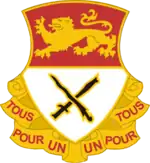
 16th Cavalry Regiment
16th Cavalry Regiment
"Strike Hard" 17th Cavalry Regiment
17th Cavalry Regiment
"Forward"
 26th Cavalry Regiment
26th Cavalry Regiment
"Our strength is in loyalty"


 32nd Cavalry
32nd Cavalry
"Victory or Death".jpg.webp) 33rd Cavalry
33rd Cavalry
"Men of War" 38th Cavalry Regiment
38th Cavalry Regiment
"Always In Front" 40th Cavalry Regiment
40th Cavalry Regiment
"By Force and Valor" 61st Cavalry
61st Cavalry
"Forging Destiny" 71st Cavalry Regiment
71st Cavalry Regiment
"Gallantly Forward" 73rd Cavalry Regiment
73rd Cavalry Regiment
"Honor Fidelity Courage" 75th Cavalry Regiment
75th Cavalry Regiment
"One Round" 82nd Cavalry Regiment
82nd Cavalry Regiment
"Temeritas" 89th Cavalry Regiment
89th Cavalry Regiment
"Ready Now" 91st Cavalry Regiment
91st Cavalry Regiment
"Alert" 94th Cavalry Regiment
94th Cavalry Regiment
"Viking Vanguard"
 101st Cavalry Regiment
101st Cavalry Regiment
"To the Utmost"
 103rd Armored Cavalry Regiment
103rd Armored Cavalry Regiment
"To the Last Man" 104th Cavalry Regiment
104th Cavalry Regiment
"Over Under or Through" 105th Cavalry Regiment
105th Cavalry Regiment
"Out In Front"
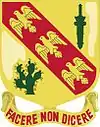
 108th Cavalry Regiment
108th Cavalry Regiment
"Come What Will" 110th Cavalry Regiment
110th Cavalry Regiment
"Yankee Eyes" 112th Cavalry Regiment
112th Cavalry Regiment
"Rarin' to Go" 116th Cavalry Regiment
116th Cavalry Regiment
"Sine Mora" 118th Cavalry Regiment
118th Cavalry Regiment
"Rough Riders"
 124th Cavalry Regiment
124th Cavalry Regiment
"Golpeo Rapidamente"
 131st Cavalry Regiment
131st Cavalry Regiment
"Taught to Lead"
 150th Cavalry Regiment
150th Cavalry Regiment
"We Can Take It"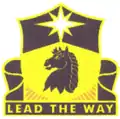 151st Cavalry Regiment
151st Cavalry Regiment
"Lead the Way" 152nd Cavalry Regiment
152nd Cavalry Regiment
"Fit to Fight"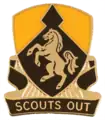 153rd Cavalry Regiment
153rd Cavalry Regiment
"Scouts Out" 167th Cavalry Regiment
167th Cavalry Regiment
"Ti Rah I Kuts" 172nd Cavalry Regiment
172nd Cavalry Regiment
"Put the Vermonters Ahead"
 183rd Cavalry Regiment
183rd Cavalry Regiment
"Death to Tyrants" 221st Cavalry Regiment
221st Cavalry Regiment
"Never Broken" 278th Armored Cavalry Regiment
278th Armored Cavalry Regiment
"I Volunteer Sir" 297th Cavalry Regiment
297th Cavalry Regiment
"Thunderwolves"
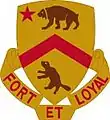

 303rd Cavalry Regiment (ARNG)
303rd Cavalry Regiment (ARNG)
"Always in the Lead"


 306th Cavalry Regiment
306th Cavalry Regiment
"Forward"





 313th Cavalry Regiment
313th Cavalry Regiment
"We Also Serve"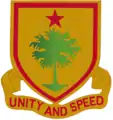 314th Cavalry Regiment
314th Cavalry Regiment
"Unity and Speed" 315th Cavalry Regiment
315th Cavalry Regiment
"See Only Victory" 316th Cavalry Regiment
316th Cavalry Regiment
"Pata Concita Fulmnt Nati"
(The Fatherland having been aroused, its sons thunder forth)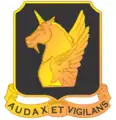
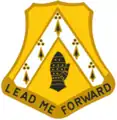 319th Cavalry Regiment
319th Cavalry Regiment
"Lead me Forward"





 82nd Reconnaissance Battalion
82nd Reconnaissance Battalion
"Audacia cum Prudentia"
(Boldly with Prudence)
Chemical

 404th Chemical Brigade
404th Chemical Brigade
"Dragons in Support"

 23rd Chemical Battalion
23rd Chemical Battalion
"Two Joined as One" 44th Chemical Battalion
44th Chemical Battalion
"Pride Integrity Courage" 83rd Chemical Battalion
83rd Chemical Battalion
"Confront Any Mission" 84th Chemical Battalion
84th Chemical Battalion
"Cave Fumo" 92nd Chemical Battalion
92nd Chemical Battalion
"Hide Behind Me" 110th Chemical Battalion
110th Chemical Battalion
"Utmost" 145th Chemical Battalion
145th Chemical Battalion
"We Can Adapt" 151st Chemical Battalion
151st Chemical Battalion
"Get There First" 155th Chemical Battalion
155th Chemical Battalion
"The Fog of War"
Civil Affairs
 United States Army Civil Affairs and Psychological Operations Command
United States Army Civil Affairs and Psychological Operations Command
"By Sword Deed and Word" 80th Civil Affairs Battalion
80th Civil Affairs Battalion
"Victory at All Cost 81st Civil Affairs Battalion
81st Civil Affairs Battalion
"Honor Sin Mideo" (Fearless Honor)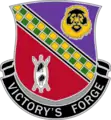 82nd Civil Affairs Battalion
82nd Civil Affairs Battalion
"Victory's Forge" 83rd Civil Affairs Battalion
83rd Civil Affairs Battalion
"Order and Balance" 84th Civil Affairs Battalion
84th Civil Affairs Battalion
"De Luce Ac Umbra" (Of Light an Shadow) 85th Civil Affairs Brigade
85th Civil Affairs Brigade 91st Civil Affairs Battalion (Airborne)
91st Civil Affairs Battalion (Airborne)
"Auctores Solidi Principii" (Builders of a Solid Foundation) 92nd Civil Affairs Battalion (Airborne)
92nd Civil Affairs Battalion (Airborne)
"Conamen Et Officium" (Commitment and Service) 95th Civil Affairs Brigade (Airborne)
95th Civil Affairs Brigade (Airborne)
"Advise Support Stabilize" 96th Civil Affairs Battalion (Airborne)
96th Civil Affairs Battalion (Airborne)
"Advise, Maintain, Create" 97th Civil Affairs Battalion (Airborne)
97th Civil Affairs Battalion (Airborne)
"Freedom Through Effects" 98th Civil Affairs Battalion (Airborne)
98th Civil Affairs Battalion (Airborne)
"The Bridge Between" 304th Civil Affairs Brigade
304th Civil Affairs Brigade
"Sustain the Peace" 308th Civil Affairs Brigade
308th Civil Affairs Brigade
"Advise, Organize, Direct"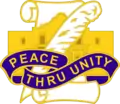 321st Civil Affairs Brigade
321st Civil Affairs Brigade
"Peace thru Unity" 322nd Civil Affairs Brigade
322nd Civil Affairs Brigade
"No Ka Pono O Ka Lahui" (For the Benefit of Mankind) 350th Civil Affairs Command
350th Civil Affairs Command
"Send Us" 351st Civil Affairs Command
351st Civil Affairs Command
"Born of Freedom" 352nd Civil Affairs Command
352nd Civil Affairs Command
"Non Ense Solum" (Not By the Sword Alone) 353rd Civil Affairs Command
353rd Civil Affairs Command
"Order Government Freedom" 354th Civil Affairs Brigade
354th Civil Affairs Brigade
"Guide the Victory" 358th Civil Affairs Brigade
358th Civil Affairs Brigade
"Victory for Humanity" 360th Civil Affairs Brigade
360th Civil Affairs Brigade
"Law Security Order" 361st Civil Affairs Brigade
361st Civil Affairs Brigade
"Secure Peace" 364th Civil Affairs Brigade
364th Civil Affairs Brigade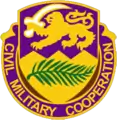 401st Civil Affairs Battalion
401st Civil Affairs Battalion
"Civil Military Cooperation" 402nd Civil Affairs Battalion
402nd Civil Affairs Battalion
"Provide Order" 403rd Civil Affairs Battalion
403rd Civil Affairs Battalion
"To Win Hearts and Minds" 404th Civil Affairs Battalion (Airborne)
404th Civil Affairs Battalion (Airborne)
"Safeguard the Future" 405th Civil Affairs Battalion
405th Civil Affairs Battalion
"Secure Serve Stabilize" 407th Civil Affairs Battalion
407th Civil Affairs Battalion
"Results Through Teamwork" 410th Civil Affairs Battalion
410th Civil Affairs Battalion
"Ordo Ab Chao" (Out of Chaos Comes Order) 411th Civil Affairs Battalion
411th Civil Affairs Battalion
"Assistance Victory Peace"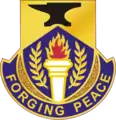 412th Civil Affairs Battalion (Airborne)
412th Civil Affairs Battalion (Airborne)
"Forging Peace" 413th Civil Affairs Battalion
413th Civil Affairs Battalion
"Peace Through Humanity" 414th Civil Affairs Battalion
414th Civil Affairs Battalion
"Liaisons to the World" 415th Civil Affairs Battalion
415th Civil Affairs Battalion
"Sapientia Nostra Arma" (Wisdom is Our Weaponry 416th Civil Affairs Battalion (Airborne)
416th Civil Affairs Battalion (Airborne)
"Advocatus Humanitatis" (Defender of Humanity) 418th Civil Affairs Battalion
418th Civil Affairs Battalion
"Proud Ready" 422nd Civil Affairs Battalion
422nd Civil Affairs Battalion
"To Advise Provide Lead" 425th Civil Affairs Battalion
425th Civil Affairs Battalion
"Win the Peace" 426th Civil Affairs Battalion (Airborne)
426th Civil Affairs Battalion (Airborne)
"Exceeding the Standard" 431st Civil Affairs Battalion
431st Civil Affairs Battalion
"Making Order Out of Chaos" 432nd Civil Affairs Battalion
432nd Civil Affairs Battalion
"Bringing Order to Chaos" 436th Civil Affairs Battalion
436th Civil Affairs Battalion
"Liberty Through Civility"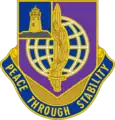 437th Civil Affairs Battalion
437th Civil Affairs Battalion
"Peace Through Stability" 440th Civil Affairs Battalion
440th Civil Affairs Battalion
"Aut Viam Inveniam Aut Faciam" (I Will Either Find a Way or Make One) 443th Civil Affairs Battalion
443th Civil Affairs Battalion
"Coordination for Success" 445th Civil Affairs Battalion
445th Civil Affairs Battalion
"Justice and Equality" 448th Civil Affairs Battalion
448th Civil Affairs Battalion
"Excellence Thru Teamwork" 450th Civil Affairs Battalion (Airborne)
450th Civil Affairs Battalion (Airborne)
"Peace or War Calm or Storm" 451st Civil Affairs Battalion
451st Civil Affairs Battalion
"Promoters of Victory" 457th Civil Affairs Battalion
457th Civil Affairs Battalion
"Peace Through Knowledge" 478th Civil Affairs Battalion (Airborne)
478th Civil Affairs Battalion (Airborne)
"Supporting the Victory" 486th Civil Affairs Battalion
486th Civil Affairs Battalion
"Force Multiplier"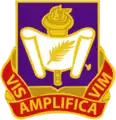 489th Civil Affairs Battalion
489th Civil Affairs Battalion
"Vis Amplifica Vim" (Force Amplify Force) 490th Civil Affairs Battalion
490th Civil Affairs Battalion
"Progress Through Unity" 492nd Civil Affairs Battalion
492nd Civil Affairs Battalion
"Hope Through Deeds"
Corps
 I Corps
I Corps
"America's Corps" III Corps
III Corps
"Phantom" V Corps
V Corps
"It will be done" VII Corps
VII Corps
"Jayhawk" IX Corps
IX Corps
"Pride of the Pacific" XVIII Airborne Corps
XVIII Airborne Corps
"Sky Dragons" XXIV Corps
XXIV Corps
"Honed in Combat" I Field Force
I Field Force
"First For Freedom"
Divisions
 1st Infantry Division
1st Infantry Division
"No Mission Too Difficult, No Sacrifice Too Great—Duty First!" 1st Cavalry Division
1st Cavalry Division
"The First Team!" 1st Armored Division
1st Armored Division
"Iron Soldiers!" 2nd Infantry Division
2nd Infantry Division
"Second to None" 2nd Armored Division
2nd Armored Division
"Hell on Wheels" 3rd Infantry Division
3rd Infantry Division
"Rock of the Marne"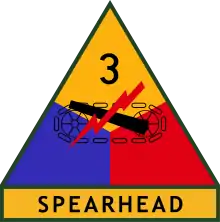 3rd Armored Division
3rd Armored Division
"Spearhead" 4th Infantry Division
4th Infantry Division
"Steadfast and Loyal" 4th Armored Division
4th Armored Division
"Name Enough" 5th Infantry Division
5th Infantry Division
"Red Devils" 5th Armored Division
5th Armored Division
"Victory" 6th Infantry Division
6th Infantry Division
"Sight Seein' Sixth" 7th Infantry Division
7th Infantry Division
"Bayonet Division" 8th Infantry Division
8th Infantry Division
"Pathfinders!" 9th Infantry Division
9th Infantry Division
"Old Reliables" 10th Mountain Division
10th Mountain Division
"Climb to Glory" 11th Airborne Division
11th Airborne Division
"Angels" 11th Armored Division
11th Armored Division
"Thunderbolt" 12th Armored Division
12th Armored Division
"Speed is the Password" 23rd Infantry Division
23rd Infantry Division
"Americal" 24th Infantry Division
24th Infantry Division
"Victory Division" 25th Infantry Division
25th Infantry Division
"Tropic Lightning" 28th Infantry Division
28th Infantry Division
"Keystone" 29th Infantry Division
29th Infantry Division
"Twenty-nine, let's go!""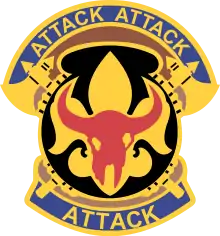 34th Infantry Division
34th Infantry Division
"Attack, Attack, Attack!" 35th Infantry Division
35th Infantry Division
"Sante Fe Division" 36th Infantry Division
36th Infantry Division
"Arrowhead" 38th Infantry Division
38th Infantry Division
"Cyclone" 40th Infantry Division
40th Infantry Division
"Sunshine Division"" 42nd Infantry Division
42nd Infantry Division
"Never Forget"

 47th Infantry Division
47th Infantry Division
"Furor Vikingorum"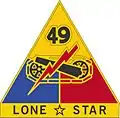 49th Armored Division
49th Armored Division
"LoneStar" 50th Armored Division
50th Armored Division
"Jersey Blues" 63rd Infantry Division
63rd Infantry Division
"Blood and Fire" 70th Infantry Division
70th Infantry Division
"Trailblazers" 76th Infantry Division
76th Infantry Division
"Onaway Division" 78th Infantry Division
78th Infantry Division
"Lightning" 80th Infantry Division
80th Infantry Division
"Only Moves Forward" 81st Infantry Division
81st Infantry Division
"Train, Maintain, Sustain"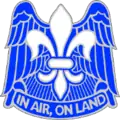 82nd Airborne Division (Obsolete)
82nd Airborne Division (Obsolete)
"In Air, On Land" 82nd Airborne Division (Current)
82nd Airborne Division (Current)
"Airborne" 84th Division
84th Division
"The Railsplitters" 85th Infantry Division
85th Infantry Division
"Custer" 87th Infantry Division
87th Infantry Division
"Golden Acorn" 89th Infantry Division
89th Infantry Division
"Rolling W" 91st Infantry Division
91st Infantry Division
"Wild West Division"

 95th Infantry Division
95th Infantry Division
"Iron Men of Metz" 98th Infantry Division
98th Infantry Division
"Iroquois" 99th Infantry Division
99th Infantry Division
"Checkmate" 100th Infantry Division
100th Infantry Division
"Century" 101st Airborne Division
101st Airborne Division
"Rendezvous With Destiny" 102nd Infantry Division
102nd Infantry Division
"Ozark" 103rd Infantry Division
103rd Infantry Division
"Cactus Division" 104th Infantry Division
104th Infantry Division
"Timberwolf Division" 124th Army Reserve Command
124th Army Reserve Command
"Meet the Challenge"
Engineer
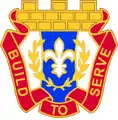 412th Theater Engineer Command
412th Theater Engineer Command
"Build to Serve" 16th Engineer Brigade
16th Engineer Brigade
"Blast Build Battle" 18th Engineer Brigade
18th Engineer Brigade
"Essayons et Edifions" 20th Engineer Brigade
20th Engineer Brigade
"Building Combat Power"
 130th Engineer Brigade
130th Engineer Brigade
"Minutemen For Freedom"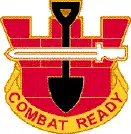 111th Engineer Brigade
111th Engineer Brigade
"Combat Ready" 168th Engineer Brigade
168th Engineer Brigade
"Monuments to Progress" 194th Engineer Brigade
194th Engineer Brigade
"Integrity and Initiative" 219th Engineer Brigade
219th Engineer Brigade
"Eye of the Tiger" 225th Engineer Brigade
225th Engineer Brigade
"Confectio" 372nd Engineer Brigade
372nd Engineer Brigade
"Engineering Leadership" 411th Engineer Brigade
411th Engineer Brigade
"Plan Build Protect" 420th Engineer Brigade
420th Engineer Brigade
"Success-our Blueprint" 555th Engineer Brigade
555th Engineer Brigade
"Willing and Able" 926th Engineer Brigade
926th Engineer Brigade
"Our Mission Above All"

 3rd Engineer Battalion
3rd Engineer Battalion
 5th Engineer Battalion
5th Engineer Battalion
"Courage Skill Strength" 6th Engineer Battalion
6th Engineer Battalion
"Clairs Chenes N'oubliez Jamais" 7th Engineer Battalion
7th Engineer Battalion 8th Engineer Battalion
8th Engineer Battalion
 10th Engineer Battalion
10th Engineer Battalion
"Laboramus Sustinere" 11th Engineer Battalion
11th Engineer Battalion
 13th Engineer Battalion
13th Engineer Battalion 14th Engineer Battalion
14th Engineer Battalion
"Gong Mu Ro"

 17th Armored Engineer Battalion
17th Armored Engineer Battalion
"We Pave the Way" 18th Engineer Battalion
18th Engineer Battalion
"Honor Courage Glory" 19th Engineer Battalion
19th Engineer Battalion
"Acutum Acumen"
(Sharp Ingenuity)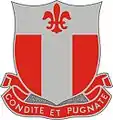 20th Engineer Battalion
20th Engineer Battalion
"Condite et Pugnate"
(Build and Fight) 21st Engineer Battalion
21st Engineer Battalion 22nd Engineer Battalion
22nd Engineer Battalion
"Tout Pour Le Droit"
(All For The Right) 23rd Engineer Battalion
23rd Engineer Battalion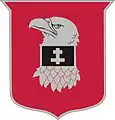 24th Engineer Battalion
24th Engineer Battalion 25th Engineer Battalion
25th Engineer Battalion 26th Engineer Battalion
26th Engineer Battalion
"Way of the Victors"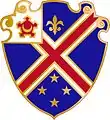 29th Engineer Battalion
29th Engineer Battalion 30th Engineer Battalion
30th Engineer Battalion
"Imprimis"
(In The First Place) 31st Engineer Battalion
31st Engineer Battalion
"Demonstramus"
(We Demonstrate) 32nd Engineer Battalion
32nd Engineer Battalion
"Vi et Armis"
(With Force and Arms) 34th Engineer Battalion
34th Engineer Battalion
"Defend and Build" 35th Engineer Battalion
35th Engineer Battalion
"Capability Courage Results" 37th Engineer Battalion
37th Engineer Battalion
"Fortuna Infortuna Forti Una"
(Fortune Is All The Same To The Man of Stout Heart) 40th Engineer Battalion
40th Engineer Battalion
"Constructio et Destructio"
(Construction and Destruction) 39th Engineer Battalion
39th Engineer Battalion
"Fight, Build And Destroy" 41st Engineer Battalion
41st Engineer Battalion
"Vigor et Valor"
(Strength and Spirit) 42nd Engineer Battalion
42nd Engineer Battalion
"Ingenio Nostro Movent" 42nd Engineer Battalion
42nd Engineer Battalion
"Power for Service" 44th Engineer Battalion
44th Engineer Battalion
"Builders of Freedom" 45th Engineer Battalion
45th Engineer Battalion
"We Advance" 46th Engineer Battalion
46th Engineer Battalion
"Steel Spike" 47th Engineer Battalion
47th Engineer Battalion
"Ingenium Superat Vires" 48th Engineer Battalion
48th Engineer Battalion
"Open the Way" 49th Engineer Battalion
49th Engineer Battalion 51st Engineer Battalion
51st Engineer Battalion
"Stopped by Nothing" 52nd Engineer Battalion
52nd Engineer Battalion
"Nous Servons"
 55th Engineer Battalion
55th Engineer Battalion
"Wisdom Courage Strength" 62nd Engineer Battalion
62nd Engineer Battalion
"Malleis Milito" 63rd Engineer Battalion
63rd Engineer Battalion
"Non Sine Industria" 64th Engineer Battalion
64th Engineer Battalion 65th Engineer Battalion
65th Engineer Battalion
"First In- Last Out"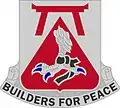 69th Engineer Battalion
69th Engineer Battalion
"Builders for Peace" 70th Engineer Battalion
70th Engineer Battalion
"Valeur-ingenuite" 74th Engineer Battalion
74th Engineer Battalion 75th Engineer Battalion
75th Engineer Battalion 76th Engineer Battalion
76th Engineer Battalion
"Laborare est Vincere" 77th Engineer Battalion
77th Engineer Battalion
"Loyalty and Service" 78th Engineer Battalion
78th Engineer Battalion
"Sedulitate" 79th Engineer Battalion
79th Engineer Battalion
"Fait Accompli" 80th Engineer Battalion
80th Engineer Battalion
"Water is Life" 82nd Engineer Battalion
82nd Engineer Battalion
"Strength and Courage" 83rd Engineer Battalion
83rd Engineer Battalion
"Assigne Accomplirons" 84th Engineer Battalion
84th Engineer Battalion
"Never Daunted" 85th Engineer Battalion
85th Engineer Battalion
"No River too Swift" 86th Engineer Battalion
86th Engineer Battalion 87th Engineer Battalion
87th Engineer Battalion
"Lay Hold" 88th Engineer Battalion
88th Engineer Battalion
"Give Way" 91st Engineer Battalion
91st Engineer Battalion
"Acts Not Words"
 93rd Engineer Battalion
93rd Engineer Battalion
"Build with Pride" 94th Engineer Battalion
94th Engineer Battalion
"Cohortibus Auxilia" 95th Engineer Battalion
95th Engineer Battalion
"Strive to Excel"
 97th Engineer Battalion
97th Engineer Battalion
"No Task Too Great"

 111th Engineer Battalion
111th Engineer Battalion
"Dedicated and Diligent" 113th Engineer Battalion
113th Engineer Battalion
"Service and Fidelity" 116th Engineer Battalion
116th Engineer Battalion
"Prepare The Way"
 127th Brigade Engineer Battalion
127th Brigade Engineer Battalion
"That Others May Follow" 130th Engineer Battalion
130th Engineer Battalion
"Skill and Strength"
 133rd Engineer Battalion
133rd Engineer Battalion
"To the Last Man" 142nd Engineer Battalion
142nd Engineer Battalion
"Warriors Support Warriors" 168th Engineer Battalion
168th Engineer Battalion
"Assistance to All" 169th Engineer Battalion
169th Engineer Battalion
"Mind and Hand" 173rd Engineer Battalion
173rd Engineer Battalion
"Soldiers Of The Great River" 177th Brigade Engineer Battalion
177th Brigade Engineer Battalion
"Give Me The Mission" 181st Engineer Battalion
181st Engineer Battalion
"Minuteman Engineering" 203rd Engineer Battalion
203rd Engineer Battalion
"Don't Kick Our Dog" 204th Engineer Battalion
204th Engineer Battalion
"Build Defend Overcome" 224th Engineer Battalion
224th Engineer Battalion
"That They May Fight" 229th Engineer Battalion
229th Engineer Battalion
"Sappers Lead"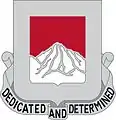 237th Engineer Battalion
237th Engineer Battalion
"Dedicated And Determined"
 276th Engineer Battalion
276th Engineer Battalion
"Liberty or Death" 299th Engineers Battalion
299th Engineers Battalion
"Proven Pioneer" 307th Brigade Engineer Battalion
307th Brigade Engineer Battalion
"I Maintain The Right" 317th Brigade Engineer Battalion
317th Brigade Engineer Battalion
"By Industry And Honor"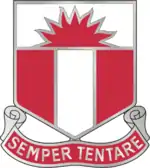
 326th Engineer Battalion
326th Engineer Battalion
"Nostrum Est" 334th Engineer Battalion
334th Engineer Battalion
"Ante Up, All In" 397th Engineer Battalion
397th Engineer Battalion
"Essayons Tout De Suite"
 588th Engineer Battalion
588th Engineer Battalion
"Hic Et Ubique"
(Here and Everywhere) 779th Brigade Engineer Battalion
779th Brigade Engineer Battalion
"Justitium Tene Nihil Timeo"
(Do Right, Fear Nothing) 841st Engineer Battalion
841st Engineer Battalion
"Build Maintain Defend"
 875th Engineer Battalion
875th Engineer Battalion
"Ready and Willing" 878th Engineer Brigade
878th Engineer Brigade
"Building for Freedom" 1092nd Engineer Battalion
1092nd Engineer Battalion
"Nihil Tam Dificile"
(Nothing too difficult)
Field Artillery
 III Corps Artillery
III Corps Artillery
"Strike for Freedom" 1st Infantry Division Artillery
1st Infantry Division Artillery
"Drumfire" 1st Cavalry Division Artillery
1st Cavalry Division Artillery
"Red Team" 3rd Infantry Division Artillery
3rd Infantry Division Artillery
"Fulfill your Mission"

 82nd Airborne Division Artillery
82nd Airborne Division Artillery
"Mass the Fire"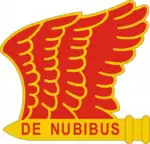
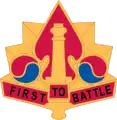 5th United States Army Artillery Group
5th United States Army Artillery Group
"First to Battle"


 45th Fires Brigade
45th Fires Brigade
"Pride, Valor, Excellence"
.svg.png.webp)
 65th Fires Brigade
65th Fires Brigade
"America's Thunder"

 138th Fires Brigade
138th Fires Brigade
"Ready in Peace and War" 169th Fires Brigade
169th Fires Brigade
"Lenti Sumus" 197th Fires Brigade
197th Fires Brigade
"Live Free or Die"

 214th Fires Brigade
214th Fires Brigade
"Naturally we lead" 18th Artillery Group
18th Artillery Group 294th Artillery Group
294th Artillery Group
"Inveniam Viam Aut Feciam"
 479th Field Artillery Brigade
479th Field Artillery Brigade
"Dependable Support" 512th United States Army Artillery Group
512th United States Army Artillery Group
"Valor Above All" 514th Artillery Group
514th Artillery Group
"Protect and Provide" 548th Artillery Group
548th Artillery Group
"Reliable and Relentless" 552nd Artillery Group
552nd Artillery Group
"Mission and Teamwork"
 558th Artillery Group
558th Artillery Group
"Honor Guides our Power" 570th United States Army Artillery Group
570th United States Army Artillery Group
"The Professionals"
 2nd Field Artillery Regiment
2nd Field Artillery Regiment
"The Second First"

 5th Field Artillery Regiment
5th Field Artillery Regiment
"Faithful and True"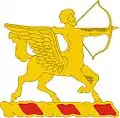
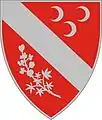 7th Field Artillery Regiment
7th Field Artillery Regiment
"Nunquam Aerumna Nec Proelio Fractum"
(Never Broken by Hardship or Battle)


 11th Field Artillery Regiment
11th Field Artillery Regiment
"On Time"
 13th Field Artillery Regiment
13th Field Artillery Regiment
"Without Fear, Favor or the Hope of Reward"


 17th Field Artillery Regiment
17th Field Artillery Regiment
"In Time of Peace Prepare For War"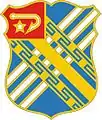





 26th Field Artillery Regiment
26th Field Artillery Regiment
"Courage and Action"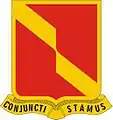
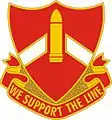 28th Field Artillery Regiment
28th Field Artillery Regiment
"We Support the Line"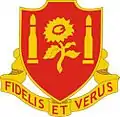
 30th Field Artillery Regiment
30th Field Artillery Regiment
"Striving To The Highest"
 32nd Field Artillery Regiment
32nd Field Artillery Regiment
"Proud Americans"
 34th Field Artillery Regiment
34th Field Artillery Regiment
"We Support"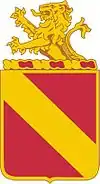
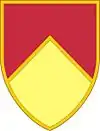 36th Field Artillery Regiment
36th Field Artillery Regiment
"In Order"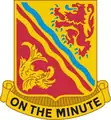 37th Field Artillery Regiment
37th Field Artillery Regiment
"On the Minute" 38th Field Artillery Regiment
38th Field Artillery Regiment
"Steel Behind the Rock"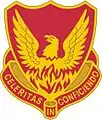
 40th Field Artillery Regiment
40th Field Artillery Regiment
"All for One" 41st Field Artillery Regiment
41st Field Artillery Regiment
"Mission Accomplished"
 73rd Field Artillery Regiment
73rd Field Artillery Regiment
"Speed and Power Always"
 76th Field Artillery Regiment
76th Field Artillery Regiment
"Duty The Spirit of 76"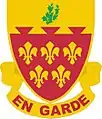

 79th Field Artillery Regiment
79th Field Artillery Regiment
"Our Country – Our Regiment" 80th Field Artillery
80th Field Artillery.svg.png.webp) 81st Field Artillery Regiment
81st Field Artillery Regiment
"Libertas Justitia Humanitas"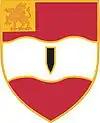 82nd Field Artillery Regiment
82nd Field Artillery Regiment
"Can and Will" 84th Field Artillery Regiment
84th Field Artillery Regiment
"Performance Above All"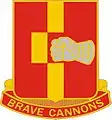 92nd Field Artillery Regiment
92nd Field Artillery Regiment
"Brave Cannons" 94th Field Artillery Regiment
94th Field Artillery Regiment
"Flexible" 101st Field Artillery Regiment
101st Field Artillery Regiment
"Vincere et Vivere" 103rd Field Artillery Regiment
103rd Field Artillery Regiment
"Play the game" 107th Field Artillery Regiment
107th Field Artillery Regiment
"Gettysburg to the Marne"
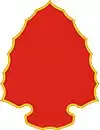
 111th Field Artillery Regiment
111th Field Artillery Regiment
 113th Field Artillery Regiment
113th Field Artillery Regiment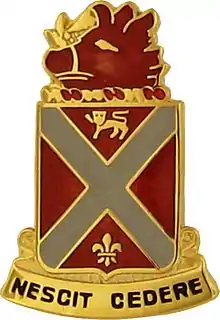 118th Field Artillery Regiment
118th Field Artillery Regiment
"Nescit Cedere" 119th Field Artillery Regiment
119th Field Artillery Regiment
"Viam Praeparamus"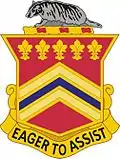 120th Field Artillery Regiment
120th Field Artillery Regiment
"Eager To Assist" 123rd Field Artillery Regiment
123rd Field Artillery Regiment
"Parati et Volentes" 125th Field Artillery Regiment
125th Field Artillery Regiment 131st Field Artillery Regiment
131st Field Artillery Regiment
"We Play the Game" 134th Field Artillery Regiment
134th Field Artillery Regiment
"Fides et Audax" 141st Field Artillery Regiment
141st Field Artillery Regiment
"Try Us" 142nd Field Artillery Regiment
142nd Field Artillery Regiment
"Try To Stop Us"
 144th Field Artillery Regiment
144th Field Artillery Regiment
"Contendimus"
(We Strive) 145th Field Artillery Regiment
145th Field Artillery Regiment
"Pro Deo"
(For God and Country) 148th Field Artillery Regiment
148th Field Artillery Regiment
"Whenever, Wherever" 157th Field Artillery Regiment
157th Field Artillery Regiment
"Eager for Duty" 160th Field Artillery Regiment
160th Field Artillery Regiment
"Toujours En Avant"
(Always Forward) 161st Field Artillery Regiment
161st Field Artillery Regiment
"Faire Sans Dire"
(To Do Without Saying) 178th Field Artillery Regiment
178th Field Artillery Regiment
"Tried and True" 182nd Field Artillery Regiment
182nd Field Artillery Regiment
"Might if Right" 192nd Field Artillery
192nd Field Artillery
"Skill and Force" 194th Field Artillery
194th Field Artillery 197th Field Artillery Regiment
197th Field Artillery Regiment
"A Bas L'avion"
(Down with the Plane) 201st Field Artillery Regiment
201st Field Artillery Regiment
"Yes Sir" 206th Field Artillery Regiment
206th Field Artillery Regiment
"Never Give Up" 214th Field Artillery Regiment
214th Field Artillery Regiment
"We hear and strike" 216th Field Artillery
216th Field Artillery
"Ami De Mouvement" 222nd Field Artillery Regiment
222nd Field Artillery Regiment
 319th Field Artillery Regiment
319th Field Artillery Regiment
"Loyalty"

 333rd Field Artillery Regiment
333rd Field Artillery Regiment
"Three Rounds"
 376th Parachute Field Artillery Battalion
376th Parachute Field Artillery Battalion
"Look Out Below" 674th Airborne Field Artillery Battalion
674th Airborne Field Artillery Battalion
"Thunder From Above" 907th Glider Field Artillery Battalion
907th Glider Field Artillery Battalion
"We Will We Can" Rocket Battery, 1st Field Artillery
Rocket Battery, 1st Field Artillery
"Ace in the Hole"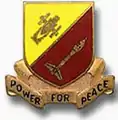 Rocket Battery, 3rd Field Artillery
Rocket Battery, 3rd Field Artillery
"Power for Peace" Rocket Battery, 7th Field Artillery
Rocket Battery, 7th Field Artillery
"Flaming Fury"
Infantry


 11th Infantry Brigade
11th Infantry Brigade
"Swift and True" 1st Brigade (Airborne), 8th Infantry Division
1st Brigade (Airborne), 8th Infantry Division 1st Brigade, 8th Infantry Division
1st Brigade, 8th Infantry Division 2nd Brigade, 8th Infantry Division
2nd Brigade, 8th Infantry Division 3rd Brigade, 8th Infantry Division
3rd Brigade, 8th Infantry Division 2nd Brigade, 25th Infantry Division
2nd Brigade, 25th Infantry Division 3rd Brigade, 25th Infantry Division
3rd Brigade, 25th Infantry Division

 79th Infantry Brigade
79th Infantry Brigade
"Dominate the Fight" 86th Infantry Brigade Combat Team
86th Infantry Brigade Combat Team
"Ready to Go" 92nd Infantry Brigade
92nd Infantry Brigade
"A Lo Que Vinimos" 120th Infantry Brigade
120th Infantry Brigade
"Our Outfits in the Fight" 157th Infantry Brigade
157th Infantry Brigade
"Vigilance and Valor" 158th Infantry Brigade
158th Infantry Brigade
"One Standard"
 170th Infantry Brigade
170th Infantry Brigade
"Strength, Honor, Discipline"
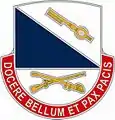
 187th Infantry Brigade
187th Infantry Brigade
"The Ready Brigade"
 189th Infantry Brigade
189th Infantry Brigade
"Swift and Lethal" 191st Infantry Brigade
191st Infantry Brigade
"Vigilante Sails" 193rd Infantry Brigade
193rd Infantry Brigade
"No Ground to Give"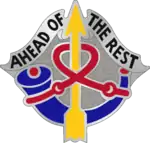 196th Infantry Brigade
196th Infantry Brigade
"Ahead of the Rest" 197th Infantry Brigade
197th Infantry Brigade
"Forever Forward".png.webp) 198th Infantry Brigade
198th Infantry Brigade
"Brave and Bold" 199th Infantry Brigade
199th Infantry Brigade
"Light Swift Accurate" 205th Infantry Brigade
205th Infantry Brigade
"Star of the North" 256th Infantry Brigade
256th Infantry Brigade
"Honor Our Heritage"




 5th Infantry Regiment
5th Infantry Regiment
"I'll Try, Sir" 6th Infantry Regiment
6th Infantry Regiment
"Unity is Strength"
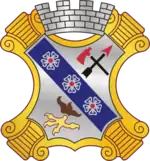
 9th Infantry Regiment
9th Infantry Regiment
"Keep Up The Fire!" 10th Infantry Regiment
10th Infantry Regiment
"Courage and Fidelity"

 13th Infantry Regiment
13th Infantry Regiment
"Forty Rounds" 14th Infantry Regiment
14th Infantry Regiment
"The Right of the Line" 15th Infantry Regiment
15th Infantry Regiment
"Can Do"
 17th Infantry Regiment
17th Infantry Regiment
"Truth and Courage"
 19th Infantry Regiment
19th Infantry Regiment
"Rock Steady, Rock Force"
 21st Infantry Regiment
21st Infantry Regiment
"Gimlet" 22nd Infantry Regiment
22nd Infantry Regiment
"Deeds, Not Words" 23rd Infantry Regiment
23rd Infantry Regiment
"We Serve"
 25th Infantry Regiment
25th Infantry Regiment
"Onward" 26th Infantry Regiment
26th Infantry Regiment
"Blue Spaders"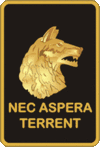

 29th Infantry Regiment
29th Infantry Regiment
"We Lead the Way" 30th Infantry Regiment
30th Infantry Regiment
"Our Country Not Ourselves"
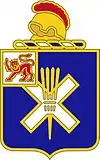


 35th Infantry Regiment
35th Infantry Regiment
"Cacti" 36th Infantry Regiment
36th Infantry Regiment
"Deeds Not Words" 37th Infantry Regiment
37th Infantry Regiment
"For Freedom"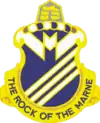 38th Infantry Regiment
38th Infantry Regiment
"Rock of the Marne"

 41st Infantry Regiment
41st Infantry Regiment
"Straight and Stalwart"


 45th Infantry Regiment
45th Infantry Regiment
"Strong To Endure" 46th Infantry Regiment
46th Infantry Regiment
"Victory’s Point"
 48th Infantry Regiment
48th Infantry Regiment
"Dragoons"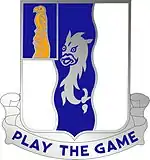 50th Infantry Regiment
50th Infantry Regiment
"Play the Game" 51st Infantry Regiment
51st Infantry Regiment
"I Serve"

 54th Infantry Regiment
54th Infantry Regiment
"I will cast my shoe over it" 56th Infantry Regiment
56th Infantry Regiment
"Honor, Loyalty" 57th Infantry Regiment
57th Infantry Regiment
"Anywhere, Anytime" 58th Infantry Regiment
58th Infantry Regiment
"Love of Country"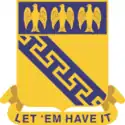 59th Infantry Regiment
59th Infantry Regiment
"Let 'em Have It" 60th Infantry Regiment
60th Infantry Regiment
"To the Utmost Extent of Our Power" 61st Infantry Regiment
61st Infantry Regiment
"The Best lead the Rest"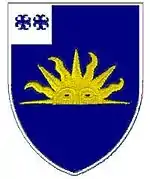
 65th Infantry Regiment
65th Infantry Regiment
"Honor and Fidelity"


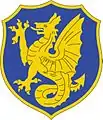
 69th Infantry Regiment
69th Infantry Regiment
"Gentle When Stroked; Fierce when Provoked"
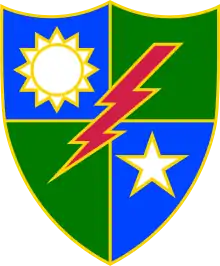
 80th Infantry Regiment
80th Infantry Regiment
"Nunc Ut Olim"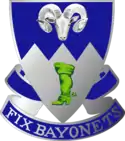 85th Infantry Regiment
85th Infantry Regiment
"Fix Bayonets" 86th Infantry Regiment
86th Infantry Regiment
"Courage and Dependability"
 88th Infantry Regiment
88th Infantry Regiment
"Ride the Storm"
 102nd Infantry Regiment
102nd Infantry Regiment
"Stand Forth" 103rd Infantry Regiment
103rd Infantry Regiment
"To the Last Man"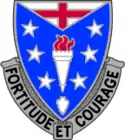
 105th Infantry Regiment
105th Infantry Regiment



 110th Infantry Regiment
110th Infantry Regiment
"Cuiusque Devotio est Vis Regimenti"
(The Devotion of Each is the Strength of the Regiment)
 112th Infantry Regiment
112th Infantry Regiment
"Strive, Obey, Endure"

 115th Infantry Regiment
115th Infantry Regiment
"Rally Round the Flag" 116th Infantry Regiment
116th Infantry Regiment
"Ever Forward" 117th Infantry Regiment
117th Infantry Regiment
"Break Through" 118th Infantry Regiment
118th Infantry Regiment
"Wherever My Country Calls" 119th Infantry Regiment
119th Infantry Regiment
"Undaunted"

 122nd Infantry Regiment
122nd Infantry Regiment
"Sentinel of Freedom" 123rd Infantry Regiment
123rd Infantry Regiment
"1, 2, 3, Go" 124th Infantry Regiment
124th Infantry Regiment
"Florida and Country" 125th Infantry Regiment
125th Infantry Regiment
"Yield to None"
 127th Infantry Regiment
127th Infantry Regiment
"Les Terribles" (The Terrible) 128th Infantry Regiment
128th Infantry Regiment
"Les Terribles" (The Terrible)
 130th Infantry Regiment
130th Infantry Regiment
"Always Ready"

 133rd Infantry Regiment
133rd Infantry Regiment
"Avauncez" (Advance)_DUI.png.webp) 134th Infantry Regiment
134th Infantry Regiment
"Mahpiya Etanhan" (From the Sky) 135th Infantry Regiment
135th Infantry Regiment
"To the Last Man" 136th Infantry Regiment
136th Infantry Regiment
"Rex Montis" (King of the Hill) 137th Infantry Regiment
137th Infantry Regiment
"Valor for Service" 138th Infantry Regiment
138th Infantry Regiment
"St. Louis' Own" 139th Infantry Regiment
139th Infantry Regiment
"First, Furthest, Last"
 141st Infantry Regiment
141st Infantry Regiment
"Remember the Alamo" 142nd Infantry Regiment
142nd Infantry Regiment
"I'll Face You" 143rd Infantry Regiment
143rd Infantry Regiment
"Arms Secure Peace"

 147th Infantry Regiment
147th Infantry Regiment
"Cargoneek Guyoxim" 148th Infantry Regiment
148th Infantry Regiment
"We'll Do It" 149th Infantry Regiment
149th Infantry Regiment
"Assign us the Mission" 151st Infantry Regiment
151st Infantry Regiment
"Wide Awake Wide Awake" 152nd Infantry Regiment
152nd Infantry Regiment
"Fit to Fight" 153rd Infantry Regiment
153rd Infantry Regiment
"Let's Go" 154th Infantry Regiment
154th Infantry Regiment
"Firm to my Trust" 155th Infantry Regiment
155th Infantry Regiment
"Stand Fast"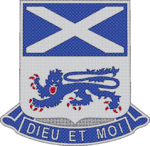 156th Infantry Regiment
156th Infantry Regiment
"Dieu Et Moi"
(God and Me) 157th Infantry Regiment
157th Infantry Regiment
"Eager for Duty" 158th Infantry Regiment
158th Infantry Regiment
"Cuidado" 159th Infantry Regiment
159th Infantry Regiment
"Unity for Service"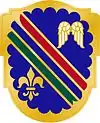

 162nd Infantry Regiment
162nd Infantry Regiment
"First to Assemble" 163rd Infantry Regiment
163rd Infantry Regiment
"Men, Do Your Duty"
 165th Infantry Regiment
165th Infantry Regiment
"Gentle When Stroked; Fierce when Provoked") 167th Infantry Regiment
167th Infantry Regiment
"Signa Inferemus" 168th Infantry Regiment
168th Infantry Regiment
"On Guard"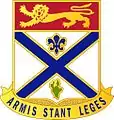 169th Infantry Regiment
169th Infantry Regiment
"Armis Stant Leges" 172nd Infantry Regiment
172nd Infantry Regiment
"Ascend to Victory"
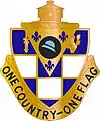 178th Infantry Regiment
178th Infantry Regiment
"One Country- One Flag"

 181st Infantry Regiment
181st Infantry Regiment
"Keep Your Powder Dry"
 184th Infantry Regiment
184th Infantry Regiment
"Let's Go!"
 185th Infantry Regiment
185th Infantry Regiment
"Fulmen Jacio"
(I Hurl The Thunderbolt)

 188th Infantry Regiment
188th Infantry Regiment
"Winged Attack"
 195th Infantry Regiment
195th Infantry Regiment
"Take and Hold"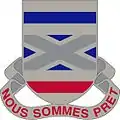 199th Infantry Regiment
199th Infantry Regiment
"Nous Sommes Pret"
 200th Infantry Regiment
200th Infantry Regiment
"Crede et Vince" 201st Infantry Regiment
201st Infantry Regiment
"Yes Sir".png.webp) 204th Infantry Regiment
204th Infantry Regiment
"Intrepid Deeds" 211th Infantry Regiment
211th Infantry Regiment
"Paroneri" 218th Infantry Regiment
218th Infantry Regiment
"Constans Animis"


 249th Infantry Regiment
249th Infantry Regiment
"Destroy in Depth" 274th Infantry Regiment
274th Infantry Regiment
"L'Avant Guard" 279th Infantry Regiment
279th Infantry Regiment
"Movin' On"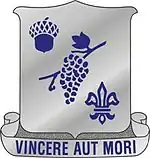
 290th Infantry Regiment
290th Infantry Regiment
"Prepared Professionals"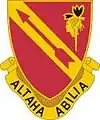
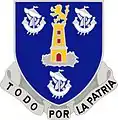 295th Infantry Regiment
295th Infantry Regiment
"Todo Por La Patria" 296th Infantry Regiment
296th Infantry Regiment
"Alerta Esta" 297th Infantry Regiment
297th Infantry Regiment
"Yuh Yek" 298th Infantry Regiment
298th Infantry Regiment
"Makaukau Kakou"
 304th Infantry Regiment
304th Infantry Regiment
"Forward" 305th Infantry Regiment
305th Infantry Regiment 307th Infantry Regiment
307th Infantry Regiment
"Clear the Way" 309th Infantry Regiment
309th Infantry Regiment
"Esse Quam Videri" 310th Infantry Regiment
310th Infantry Regiment
"Allons Mes Enfants"
(Forward My Children) 311th Infantry Regiment
311th Infantry Regiment
"Jamais Trop Tard" 312nd Infantry Regiment
312nd Infantry Regiment
"Au Feu Toujours" 313th Infantry Regiment
313th Infantry Regiment
"Virtute et Fide" 314th Infantry Regiment
314th Infantry Regiment
"Fortitude and Courage" 315th Infantry Regiment
315th Infantry Regiment
"Qui me tangit paenitebit"
(He who touches me will repent) 317th Infantry Regiment
317th Infantry Regiment
"Armis et Animis" 318th Infantry Regiment
318th Infantry Regiment
"Old Virginia Never Tires" 319th Infantry Regiment
319th Infantry Regiment
"Volens et Potens" 320th Infantry Regiment
320th Infantry Regiment
"Forward" 321st Infantry Regiment
321st Infantry Regiment
"En Avant" 322nd Infantry Regiment
322nd Infantry Regiment
"Excelsior" 323rd Infantry Regiment
323rd Infantry Regiment
"Le Bon Vouloir Servir Le Pays" 325th Infantry Regiment
325th Infantry Regiment
"Lets Go"
 327th Infantry Regiment
327th Infantry Regiment
"Honor and Country
 330th Infantry Regiment
330th Infantry Regiment
"Versus Ad Finem" 331st Infantry Regiment
331st Infantry Regiment
"See it Through"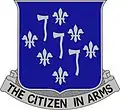 333rd Infantry Regiment
333rd Infantry Regiment
"The Citizen in Arms"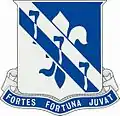 334th Infantry Regiment
334th Infantry Regiment
"Fortes Fortuna Juvat" 335th Infantry Regiment
335th Infantry Regiment
"A Fin"


 340th Infantry Regiment
340th Infantry Regiment
"Forward" 345th Infantry Regiment
345th Infantry Regiment 346th Infantry Regiment
346th Infantry Regiment
"Semper et Ubique Fidelis" 347th Infantry Regiment
347th Infantry Regiment
"Dare your Best" 348th Infantry Regiment
348th Infantry Regiment
"AnLI yamohmikma KAMASSA"
(Sincerity and Strength)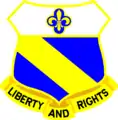 349th Infantry Regiment
349th Infantry Regiment
"Liberty and Rights" 350th Infantry Regiment
350th Infantry Regiment
"Fidelity and Service"
 353rd Infantry Regiment
353rd Infantry Regiment 354th Infantry Regiment
354th Infantry Regiment
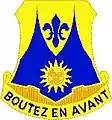 356th Infantry Regiment
356th Infantry Regiment
"Boutez en Avant"
(Push Forward) 357th Infantry Regiment
357th Infantry Regiment
"Siempre Alerta"
(Always Alert) 358th Infantry Regiment
358th Infantry Regiment
"Peragimus" (We accomplish) 359th Infantry Regiment
359th Infantry Regiment
"Carry On"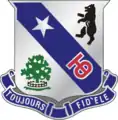 360th Infantry Regiment
360th Infantry Regiment
"Toujours Fidele"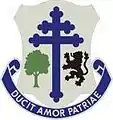 361st Infantry Regiment
361st Infantry Regiment
"Ducit Amor Patriae"
(Led by Love of Country) 362nd Infantry Regiment
362nd Infantry Regiment
"Arma Tuentur Pacem"
(Arms maintain peace)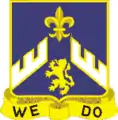 363rd Infantry Regiment
363rd Infantry Regiment
"We Do" 369th Infantry Regiment
369th Infantry Regiment
"Harlem Hellfighters"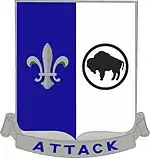 371st Infantry Regiment
371st Infantry Regiment
"Attack" 378th Infantry Regiment
378th Infantry Regiment
"Hikia Kallo" 379th Infantry Regiment
379th Infantry Regiment
"Ad Finem" 382nd Infantry Regiment
382nd Infantry Regiment
"We Lead" 383rd Infantry Regiment
383rd Infantry Regiment
"Dependable"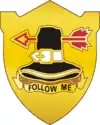 385th Infantry Regiment
385th Infantry Regiment
"Follow Me" 389th Infantry Regiment
389th Infantry Regiment
"We Will Try" 392nd Infantry Regiment
392nd Infantry Regiment
"Pace et Bello Paratus"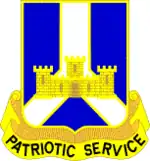 393rd Infantry Regiment
393rd Infantry Regiment
"Patriotic Service"
 395th Infantry Regiment
395th Infantry Regiment
"Vigilans et Celer" 401st Glider Infantry Regiment
401st Glider Infantry Regiment
"Lions of the Skies" 405th Infantry Regiment
405th Infantry Regiment
"Up Front" 406th Infantry Regiment
406th Infantry Regiment
"To the Front" 407th Infantry Regiment
407th Infantry Regiment
"Aux Arcs" 410th Infantry Regiment
410th Infantry Regiment
"Super Ardua Surgo"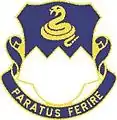 411th Infantry Regiment
411th Infantry Regiment
"Paratus Ferire"
(Ready to Strike)
 420th Infantry Regiment
420th Infantry Regiment
"Ubique Impavidi"
(In All Things Undaunted) 425th Infantry Regiment
425th Infantry Regiment
"Around the World Unseen" 442nd Infantry Regiment
442nd Infantry Regiment
"Go for Broke" 501st Parachute Infantry Regiment
501st Parachute Infantry Regiment
"Geronimo" 502nd Infantry Regiment
502nd Infantry Regiment
"Strike"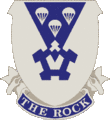 503rd Parachute Infantry Regiment
503rd Parachute Infantry Regiment
"The Rock" 504th Parachute Infantry Regiment
504th Parachute Infantry Regiment
"Strike Hold" 505th Parachute Infantry Regiment
505th Parachute Infantry Regiment
"H-Minus".svg.png.webp) 506th Infantry Regiment
506th Infantry Regiment
"Currahee"

 509th Parachute Infantry Regiment
509th Parachute Infantry Regiment
"All the Way" 511th Parachute Infantry Regiment
511th Parachute Infantry Regiment
"Strength from Above" 515th Infantry Regiment
515th Infantry Regiment
"Adelante" 519th Infantry Regiment
519th Infantry Regiment
"Forward" 550th Airborne Infantry Regiment
550th Airborne Infantry Regiment
"A Bolt from the Blue" 12th Armored Infantry Battalion
12th Armored Infantry Battalion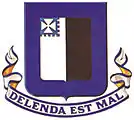
 41st Armored Infantry Battalion
41st Armored Infantry Battalion
"Straight and Stalwart" 42nd Armored Infantry Battalion
42nd Armored Infantry Battalion
"Forward with Fire and Steel" 43rd Armored Infantry Battalion
43rd Armored Infantry Battalion
"Above and Beyond"
Information Operations

 151st Theater Information Operations Group
151st Theater Information Operations Group
"Non Memor" 152nd Theater Information Operations Group
152nd Theater Information Operations Group
"Praestantia Indicii" 110th Information Operations Battalion
110th Information Operations Battalion
Maneuver enhancement
 1st Maneuver Enhancement Brigade
1st Maneuver Enhancement Brigade
"Guardian Brigade" 3rd Maneuver Enhancement Brigade
3rd Maneuver Enhancement Brigade
"Resolve, Protection, Strength" 4th Maneuver Enhancement Brigade
4th Maneuver Enhancement Brigade
"Dauntless"


 149th Maneuver Enhancement Brigade
149th Maneuver Enhancement Brigade
"Never Defeated" 157th Maneuver Enhancement Brigade
157th Maneuver Enhancement Brigade
"Iron Brigade" 404th Maneuver Enhancement Brigade
404th Maneuver Enhancement Brigade
"Dragons in Support"
Medical and veterinary
 United States Army Dental Command
United States Army Dental Command
"Global Care" United States Army Medical Command
United States Army Medical Command
"Responsive and Dedicated" United States Army Medical Logistics Command
United States Army Medical Logistics Command
"Prepare, Deploy, Sustain" United States Army Medical Research and Materiel Command
United States Army Medical Research and Materiel Command
"Protect, Project, Sustain" United States Army Medical Department Center and School
United States Army Medical Department Center and School
"To Conserve Fighting Strength "
 3rd Medical Command
3rd Medical Command
"Front Line Surgeons" 807th Medical Command
807th Medical Command
"Dedicated to Health" 1st Medical Brigade
1st Medical Brigade
"Fortitude and Compassion" 5th Medical Brigade
5th Medical Brigade
"Leadership and Service" 8th Medical Brigade
8th Medical Brigade
"Strength through Health"
 62nd Medical Brigade
62nd Medical Brigade
"Proud and Steadfast" 139th Medical Brigade
139th Medical Brigade
"Valor and Worth" 176th Medical Brigade
176th Medical Brigade
"To Serve Proudly"
 48th Armored Medical Battalion
48th Armored Medical Battalion
"Humanity Marshalled" 108th Medical Battalion
108th Medical Battalion 109th Medical Battalion
109th Medical Battalion
"Save to Serve Again" 161st Medical Battalion
161st Medical Battalion
"Conservo et Supero" (I save and overcome) 421st Medical Battalion
421st Medical Battalion
"Anyone, Anywhere, Anytime"
 14th Combat Support Hospital
14th Combat Support Hospital
"First to Care" 28th Combat Support Hospital
28th Combat Support Hospital
"Service Through Mobility"
 343rd Evacuation Hospital
343rd Evacuation Hospital
"Best of the Best" 385th Field Hospital
385th Field Hospital
"Priority: Life" Brooke Army Medical Center
Brooke Army Medical Center
"Dedication Duty Service" Carl R. Darnall Army Medical Center
Carl R. Darnall Army Medical Center
"Care and Concern".jpg.webp) Dwight D. Eisenhower Army Medical Center
Dwight D. Eisenhower Army Medical Center
"Dignity Dedication Honor"
 Ireland Army Community Hospital
Ireland Army Community Hospital
"Because we care" Kenner Army Health Clinic
Kenner Army Health Clinic
"Medicine Service Health" Kirk General Hospital
Kirk General Hospital
"Your Health is our Goal" Landstuhl Regional Medical Center
Landstuhl Regional Medical Center
"Selfless Service" Madigan Army Medical Center
Madigan Army Medical Center
"Care With Compassion"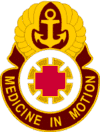 McDonald Army Health Center
McDonald Army Health Center
"Medicine in Motion" Walter Reed National Military Medical Center, U.S. Army Element[6]
Walter Reed National Military Medical Center, U.S. Army Element[6]
"Scientia Inter Arma Spiritus"
(In the Spirit of Science and Arms)
 William Beaumont Army Medical Center
William Beaumont Army Medical Center
"First to Care"
 Medical Department Activity, Yuma Proving Ground
Medical Department Activity, Yuma Proving Ground
Military Intelligence


 650th Military Intelligence Group
650th Military Intelligence Group 706th Military Intelligence Group
706th Military Intelligence Group 902nd Military Intelligence Group
902nd Military Intelligence Group 58th Expeditionary Military Intelligence Brigade
58th Expeditionary Military Intelligence Brigade
"Maryland 400" 66th Military Intelligence Brigade
66th Military Intelligence Brigade
"Honor Valor and Security" 71st Expeditionary Military Intelligence Brigade
71st Expeditionary Military Intelligence Brigade
"On the Hunt"

 201st Expeditionary Military Intelligence Brigade
201st Expeditionary Military Intelligence Brigade
"With Courage and Vision" 205th Military Intelligence Brigade
205th Military Intelligence Brigade
"Vanguard of Vigilance"
 300th Military Intelligence Brigade
300th Military Intelligence Brigade
"Excellence in Language"
 470th Military Intelligence Brigade
470th Military Intelligence Brigade
"Truth Security Loyalty"
 501st Military Intelligence Brigade
501st Military Intelligence Brigade
"Red Dragons"
 513th Military Intelligence Brigade
513th Military Intelligence Brigade
"Per Vigilantiam Scientia" (Knowledge Through Vigilance) 525th Expeditionary Military Intelligence Brigade
525th Expeditionary Military Intelligence Brigade
"Fast Factual Faithful" 704th Military Intelligence Brigade
704th Military Intelligence Brigade
"Here and Everywhere"


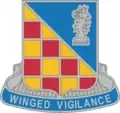 3rd Military Intelligence Battalion
3rd Military Intelligence Battalion
"Winged Vigilance" 15th Military Intelligence Battalion
15th Military Intelligence Battalion
"Vigilantia Ad Finem"
(Vigilant to the End) 18th Military Intelligence Battalion
18th Military Intelligence Battalion
"Collection for Defense" 24th Military Intelligence Battalion
24th Military Intelligence Battalion
"Our Eyes Support" 102nd Military Intelligence Battalion
102nd Military Intelligence Battalion
"Knowledge for Battle" 103rd Military Intelligence Battalion
103rd Military Intelligence Battalion
"Top of the Rock" 109th Military Intelligence Battalion
109th Military Intelligence Battalion
"The Disruptors" 141st Military Intelligence Battalion
141st Military Intelligence Battalion
"Strength through Knowledge" 142nd Military Intelligence Battalion
142nd Military Intelligence Battalion
"Into all the World" 163rd Military Intelligence Battalion
163rd Military Intelligence Battalion
"Knowledge is Power" 165th Military Intelligence Battalion
165th Military Intelligence Battalion
"Pride Quality Success" 201st Military Intelligence Battalion
201st Military Intelligence Battalion
"Accurate Fast All Source" 202nd Military Intelligence Battalion
202nd Military Intelligence Battalion
"Conlige Et Profice"
(Collect and Exploit)
 204th Military Intelligence Battalion
204th Military Intelligence Battalion
"Silently We Defend" 205th Military Intelligence Battalion
205th Military Intelligence Battalion
"Pacific Vigilance" 223rd Military Intelligence Battalion
223rd Military Intelligence Battalion
"Insight through Inquiry" 224th Military Intelligence Battalion
224th Military Intelligence Battalion
"Vigilance Above" 229th Military Intelligence Battalion
229th Military Intelligence Battalion
"Strength from Intelligence" 250th Military Intelligence Battalion
250th Military Intelligence Battalion
"Knowledge Power Freedom"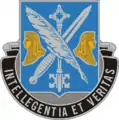 260th Military Intelligence Battalion
260th Military Intelligence Battalion
"Intelligentia Et Veritas"
(Intelligence and Truth) 297th Military Intelligence Battalion
297th Military Intelligence Battalion 301st Military Intelligence Battalion
301st Military Intelligence Battalion
"The Force Multiplier"

 304th Military Intelligence Battalion
304th Military Intelligence Battalion
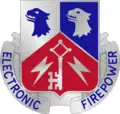
 308th Military Intelligence Battalion
308th Military Intelligence Battalion
"Guardians of America"
 310th Military Intelligence Battalion
310th Military Intelligence Battalion
"Arrectis Auribus"
(With Ears Pricked Up) 311th Military Intelligence Battalion
311th Military Intelligence Battalion
"Eyes of the Eagle" 312th Military Intelligence Battalion
312th Military Intelligence Battalion 313th Military Intelligence Battalion
313th Military Intelligence Battalion
"Crimson Dragons"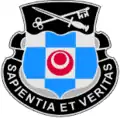 314th Military Intelligence Battalion
314th Military Intelligence Battalion
"Sapientia et Veritas"
(Prudence and Truth) 319th Military Intelligence Battalion
319th Military Intelligence Battalion
"Hostem Cogere"
(To Know the Enemy)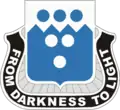
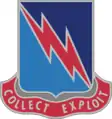 323rd Military Intelligence Battalion
323rd Military Intelligence Battalion
"Collect Exploit"
 337th Military Intelligence Battalion
337th Military Intelligence Battalion 338th Military Intelligence Battalion
338th Military Intelligence Battalion
"Inveni Et Usurpa"
(Find and Use) 341st Military Intelligence Battalion
341st Military Intelligence Battalion
"Vigilantia Et Valor"
(Vigilance and Valor)

 368th Military Intelligence Battalion
368th Military Intelligence Battalion
"Vanguard of the Pacific" 372nd Military Intelligence Battalion
372nd Military Intelligence Battalion 373rd Military Intelligence Battalion
373rd Military Intelligence Battalion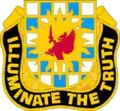
 378th Military Intelligence Battalion
378th Military Intelligence Battalion
_DUI.png.webp)
 415th Military Intelligence Battalion
415th Military Intelligence Battalion
"Passe Partout" 502nd Military Intelligence Battalion
502nd Military Intelligence Battalion
"Freedom by Vigilance" 511th Military Intelligence Battalion
511th Military Intelligence Battalion
"Ever Supportive"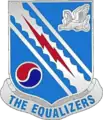
 524th Military Intelligence Battalion
524th Military Intelligence Battalion
"Silent Vigilance" 532nd Military Intelligence Battalion
532nd Military Intelligence Battalion
"Nosce Hostem"
 629th Expeditionary Military Intelligence Battalion
629th Expeditionary Military Intelligence Battalion 636th Military Intelligence Battalion
636th Military Intelligence Battalion
"Lone Star Vigilance" 709th Military Intelligence Battalion
709th Military Intelligence Battalion
"Fortis Et Vigilio"
(Strong and Vigilant) 719th Military Intelligence Battalion
719th Military Intelligence Battalion
"Strive for Excellence" 741st Military Intelligence Battalion
741st Military Intelligence Battalion
"Primoris Scio"
(First to Know) 742nd Military Intelligence Battalion
742nd Military Intelligence Battalion
"Might Through Vigilance" 743rd Military Intelligence Battalion
743rd Military Intelligence Battalion
"Beyond all boundaries" 781st Military Intelligence Battalion
781st Military Intelligence Battalion
"Ubi Ceteri Non Possunt"
Military Police
 United States Army Criminal Investigation Command
United States Army Criminal Investigation Command
"Do what has to be Done" Army Corrections Command
Army Corrections Command
"Vanguards of Justice"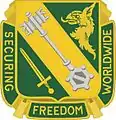 46th Military Police Command
46th Military Police Command
"Securing Freedom Worldwide"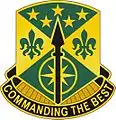 200th Military Police Command
200th Military Police Command
"Commanding the Best" 2nd Military Police Group
2nd Military Police Group
"Pride with Honor" 11th Military Police Brigade
11th Military Police Brigade
"Command Plan and Control" 14th Military Police Group
14th Military Police Group
"We Give our Best"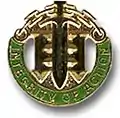 42nd Military Police Group
42nd Military Police Group
"Integrity of Action"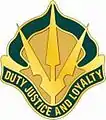 15th Military Police Brigade
15th Military Police Brigade
"Duty Justice and Loyalty" 16th Military Police Brigade
16th Military Police Brigade
"Combat Support" 18th Military Police Brigade
18th Military Police Brigade
"Ever Vigilant" 35th Military Police Brigade
35th Military Police Brigade
"Defending Our Own" 42nd Military Police Brigade
42nd Military Police Brigade
"Integrity of Action" 43rd Military Police Brigade
43rd Military Police Brigade
"Protect the Right" 49th Military Police Brigade
49th Military Police Brigade
"Pride and Power" 89th Military Police Brigade
89th Military Police Brigade
"Proven in Battle" 142th Military Police Brigade
142th Military Police Brigade
"Beati Pacifici" 177th Military Police Brigade
177th Military Police Brigade
"Protect Defend Preserve" 220th Military Police Brigade
220th Military Police Brigade
"Support by Doing" 290th Military Police Brigade
290th Military Police Brigade
"Custody with Honor"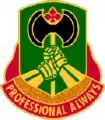 5th Military Police Battalion (CID)
5th Military Police Battalion (CID)
"Professional Always" 10th Military Police Battalion (CID)
10th Military Police Battalion (CID)
"Justice from Above" 11th Military Police Battalion (CID)
11th Military Police Battalion (CID)
"Strength through Truth" 19th Military Police Battalion (CID)
19th Military Police Battalion (CID)
"Truth is our Sword" 22nd Military Police Battalion (CID)
22nd Military Police Battalion (CID)
"Integrity above All" 91st Military Police Battalion
91st Military Police Battalion
"Honor Above All" 92nd Military Police Battalion
92nd Military Police Battalion
"Hold the Gate"
 94th Military Police Battalion
94th Military Police Battalion
"When in Need" 95th Military Police Battalion
95th Military Police Battalion
"Superstars" 96th Military Police Battalion
96th Military Police Battalion
"Unity is our Strength" 97th Military Police Battalion
97th Military Police Battalion
"Take Charge" 102nd Military Police Battalion
102nd Military Police Battalion
"Honor Pro Militisus" 104th Military Police Battalion
104th Military Police Battalion
"Vanguards of the Empire" 117th Military Police Battalion
117th Military Police Battalion
"Our History, Our Strength" 124th Military Police Battalion
124th Military Police Battalion
"Island Sentinels" 160th Military Police Battalion
160th Military Police Battalion
"Honorem Restituimus"
(We Restore Honor) 168th Military Police Battalion
168th Military Police Battalion
"Serving Those Who Serve" 175th Military Police Battalion
175th Military Police Battalion
"Fidelitas Virtus Stabilitas"
(Fidelity, Virtue, Stability) 185th Military Police Battalion
185th Military Police Battalion
"Forged from Freedom" 192nd Military Police Battalion
192nd Military Police Battalion
"Skill and Force"
 304th Military Police Battalion
304th Military Police Battalion
"Comis Sed Fortiter"
(Kindly but Strongly) 306th Military Police Battalion
306th Military Police Battalion
"Quttianum" 317th Military Police Battalion
317th Military Police Battalion
"Be Just and Fear Not" 327th Military Police Battalion
327th Military Police Battalion
"Safety and Security" 372nd Military Police Battalion
372nd Military Police Battalion
"We Guard the Peace" 385th Military Police Battalion
385th Military Police Battalion
"Honor Vigilance Justice" 393rd Military Police Battalion (CID)
393rd Military Police Battalion (CID)
"Truth and Justice" 503rd Military Police Battalion
503rd Military Police Battalion
"Protect Assist Enforce" 504th Military Police Battalion
504th Military Police Battalion
"Duty, Justice and Honor" 508th Military Police Battalion
508th Military Police Battalion
"Sine Praejudicio"
(Without Prejudgement) 519th Military Police Battalion
519th Military Police Battalion
"Service to the Troops" 535th Military Police Battalion
535th Military Police Battalion
"Guard and Defend" 701st Military Police Battalion
701st Military Police Battalion
"Assist by Example" 709th Military Police Battalion
709th Military Police Battalion
"Securitas Copiarum" 716th Military Police Battalion
716th Military Police Battalion
"Lex et Ordo"
(Law and Order) 720th Military Police Battalion
720th Military Police Battalion
"Orderly Regulation" 724th Military Police Battalion
724th Military Police Battalion
"Honor Commitment Justice"
 728th Military Police Battalion
728th Military Police Battalion
"In Peace as in War"
 785th Military Police Battalion
785th Military Police Battalion
"Safeguard and Secure" 787th Military Police Battalion
787th Military Police Battalion
"Excellence Always"
 795th Military Police Battalion
795th Military Police Battalion
"Send Me" 850th Military Police Battalion
850th Military Police Battalion
"Veritas Aequitas"
(Truth and Justice)
Ordnance
 57th Ordnance Brigade
57th Ordnance Brigade
"V for Victory" 59th Ordnance Brigade
59th Ordnance Brigade
"Power to Spare" 71st Ordnance Group (EOD)
71st Ordnance Group (EOD)
"With Distinction and Valor" 3rd Ordnance Battalion
3rd Ordnance Battalion
"Service, Not Glory" 9th Ordnance Battalion
9th Ordnance Battalion
"Support with Strength" 55th Maintenance Battalion
55th Maintenance Battalion
"Victory Through Support" 55th Maintenance Battalion
55th Maintenance Battalion
"Complete Support"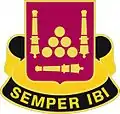 63rd Ordnance Battalion(EOD)
63rd Ordnance Battalion(EOD)
"Semper Ibi"
(Always There) 72nd Ordnance Battalion
72nd Ordnance Battalion
"Security and Reliability 83rd Ordnance Battalion
83rd Ordnance Battalion
"Supporting the Best" 101st Ordnance Battalion
101st Ordnance Battalion 124th Ordnance Battalion
124th Ordnance Battalion
"Valere et Servitium"
(To Be Strong and Serve) 184th Ordnance Battalion (EOD)
184th Ordnance Battalion (EOD)
"Without Equal" 192nd Ordnance Battalion (EOD)
192nd Ordnance Battalion (EOD)
"The Reliable One" 197th Ordnance Battalion
197th Ordnance Battalion 501st Ordnance Battalion (EOD)
501st Ordnance Battalion (EOD) 724th Ordnance Battalion
724th Ordnance Battalion
"Strength in Service" 725th Ordnance Battalion
725th Ordnance Battalion
"Service to the Line" 734th Maintenance Battalion
734th Maintenance Battalion
"Maintain, Support, Defend"
Psychological Operations


 7th Psychological Operations Group
7th Psychological Operations Group
"Support by Truth" 8th Psychological Operations Group
8th Psychological Operations Group
"Decisive Influence" 1st Psychological Operations Battalion
1st Psychological Operations Battalion
"First With the Finest" 3rd Psychological Operations Battalion
3rd Psychological Operations Battalion
"Power to Influence" 5th Psychological Operations Battalion
5th Psychological Operations Battalion
"Victory Through Influence"
 7th Psychological Operations Battalion
7th Psychological Operations Battalion
"Potentia et Adduco"
(To Influence and Persuade) 8th Psychological Operations Battalion
8th Psychological Operations Battalion
"Triumphus Persuasionis"
(Triumph of Persuasion) 9th Psychological Operations Battalion
9th Psychological Operations Battalion
"Win the Mind, Win the Day" 10th Psychological Operations Battalion
10th Psychological Operations Battalion
"Potestas Persuasionis"
(The Power of Persuasion) 11th Psychological Operations Battalion
11th Psychological Operations Battalion
"Exploiters" 12th Psychological Operations Battalion
12th Psychological Operations Battalion
"Mutatio Animi"
(Changing Minds) 13th Psychological Operations Battalion
13th Psychological Operations Battalion
"Power of Persuasion" 14th Psychological Operations Battalion
14th Psychological Operations Battalion
"Vincere Persuadentes"
(To Conquer by Persuasion) 15th Psychological Operations Battalion
15th Psychological Operations Battalion
"Minds Words Deeds"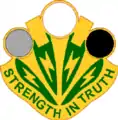 16th Psychological Operations Battalion
16th Psychological Operations Battalion
"Strength in Truth" 17th Psychological Operations Battalion
17th Psychological Operations Battalion
"Win with Words" 18th Psychological Operations Battalion
18th Psychological Operations Battalion
"Anticipate the Command"
Quartermaster
 23rd Quartermaster Brigade
23rd Quartermaster Brigade
"The Corps Starts Here" 2nd Quartermaster Group
2nd Quartermaster Group
"Fuel Line to Victory" 49th Quartermaster Group
49th Quartermaster Group
"Fueling the Force"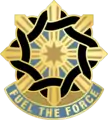 354th Quartermaster Group
354th Quartermaster Group
“Fuel The Force” 16th Quartermaster Squadron
16th Quartermaster Squadron 56th Quartermaster Battalion
56th Quartermaster Battalion
"Meet the Need" 61st Quartermaster Battalion
61st Quartermaster Battalion
"Foundation for Victory" 95th Supply and Services Battalion
95th Supply and Services Battalion
"Supply the Line" 244th Quartermaster Battalion
244th Quartermaster Battalion
"Si Non Potestis Possumus" 262nd Quartermaster Battalion
262nd Quartermaster Battalion
"Lifeline to Victory" 266th Quartermaster Battalion
266th Quartermaster Battalion
"The Providers"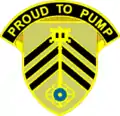 505th Quartermaster Battalion
505th Quartermaster Battalion
"Proud to Pump" 554th Quartermaster Battalion
554th Quartermaster Battalion
"Liberte et Droit"
Regional support groups
 10th Regional Support Group
10th Regional Support Group
"Service through Support"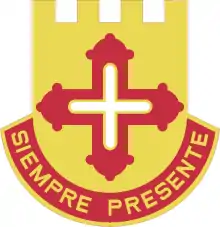 191st Regional Support Group
191st Regional Support Group
"Sempre Presente"
 213th Area Support Group
213th Area Support Group
"Honor First"
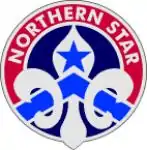 644th Regional Support Group
644th Regional Support Group
"Northern Star"
Security Force Assistance




 4th Security Force Assistance Brigade
4th Security Force Assistance Brigade 5th Security Force Assistance Brigade
5th Security Force Assistance Brigade 54th Security Force Assistance Brigade
54th Security Force Assistance Brigade
Signal
 United States Army Communications-Electronics Command
United States Army Communications-Electronics Command
"Combat Power for Leaders" Army Network Enterprise Technology Command
Army Network Enterprise Technology Command
"Voice of the Army" Joint Communications Unit-Army Element
Joint Communications Unit-Army Element 5th Signal Command
5th Signal Command
"Professional Communicators" 1st Signal Brigade
1st Signal Brigade
"First to Communicate" 2nd Signal Brigade
2nd Signal Brigade
"Excellence" 3rd Signal Brigade
3rd Signal Brigade
"Triple Threat" 7th Signal Brigade
7th Signal Brigade
"Voice of Freedom" 11th Signal Brigade
11th Signal Brigade
"Flexibility, Dependability" 15th Signal Brigade
15th Signal Brigade
"Fideliter Servimus" 35th Signal Brigade
35th Signal Brigade
"Utmost of our Ability" 93rd Signal Brigade
93rd Signal Brigade
"Loyalty, Harmony, Accuracy" 160th Signal Brigade
160th Signal Brigade
"Finest Of The First"
 516th Signal Brigade
516th Signal Brigade
"Voice of the Pacific" 1st Signal Battalion
1st Signal Battalion
"In medias res" 5th Signal Battalion
5th Signal Battalion
"We Move Fast" 11th Signal Battalion
11th Signal Battalion
"Sure and Ready"
 25th Signal Battalion
25th Signal Battalion
"Never Unprepared" 30th Signal Battalion
30th Signal Battalion
"Fortiter et Strenue" 32nd Signal Battalion
32nd Signal Battalion
"Sound the War Horns" 35th Signal Battalion
35th Signal Battalion
"We Carry the Word" 36th Signal Battalion
36th Signal Battalion
"For the Commander" 38th Signal Battalion
38th Signal Battalion
"Signal Ready" 39th Signal Battalion
39th Signal Battalion
"The Will to Succeed" 41st Signal Battalion
41st Signal Battalion 52nd Signal Battalion
52nd Signal Battalion
"We Transmit" 53rd Signal Battalion
53rd Signal Battalion
"First Last Always" 54th Signal Battalion
54th Signal Battalion
"Command Control" 56th Signal Battalion
56th Signal Battalion
"Debit Verbum Transire"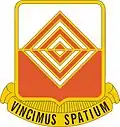 57th Signal Battalion
57th Signal Battalion
"Vincimus Spatium"
 72nd Signal Battalion
72nd Signal Battalion 86th Signal Battalion
86th Signal Battalion
"First Voice Heard"
 102nd Signal Battalion
102nd Signal Battalion
"Honor, Heritage, History"
 115th Signal Battalion
115th Signal Battalion
"First in Duty"
 122nd Signal Battalion
122nd Signal Battalion 123rd Signal Battalion
123rd Signal Battalion
"Prima Vox Audiat"

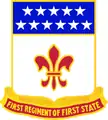 198th Signal Battalion
198th Signal Battalion
"First Regiment of First State" 234th Signal Battalion
234th Signal Battalion
"A Superior Performance"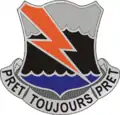 304th Signal Battalion
304th Signal Battalion
"Pret Toujours Pret" 307th Signal Battalion
307th Signal Battalion
"Optime Merenti"
(Providing the Best) 327th Signal Battalion
327th Signal Battalion
"Speed and Accuracy" 369th Signal Battalion
369th Signal Battalion
"Quality All Ways" 392nd Signal Battalion
392nd Signal Battalion
"We Serve to Honor" 509th Signal Battalion
509th Signal Battalion
"Faciemus Fortius"
Space and Missile Defense
 First Space Brigade
First Space Brigade 100th Missile Defense Brigade
100th Missile Defense Brigade 1st Space Battalion
1st Space Battalion
"Space Warriors" 2nd Space Battalion
2nd Space Battalion
"Spatium Militum"
"Space Warriors" 49th Missile Defense Battalion
49th Missile Defense Battalion
"Defensimus Patriam" 117th Space Battalion
117th Space Battalion
"Guardians of Space"
Special Forces
 Special Forces
Special Forces
"De Oppresso Liber"
 US Army Element, Special Operations Joint Task Force Afghanistan
US Army Element, Special Operations Joint Task Force Afghanistan
Special troops battalions
 Special Troops Battalion, 1st Cavalry Division
Special Troops Battalion, 1st Cavalry Division
"Live the Legend" Special Troops Battalion, 1st Armored Division
Special Troops Battalion, 1st Armored Division
"Make it Matter" Special Troops Battalion, 2nd Infantry Division
Special Troops Battalion, 2nd Infantry Division
"Rock Solid, Strike Hard" Special Troops Battalion, 3rd Infantry Division
Special Troops Battalion, 3rd Infantry Division
"Fortius Quo Unitatis"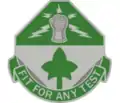 Special Troops Battalion, 4th Infantry Division
Special Troops Battalion, 4th Infantry Division
"Fit for Any Test" Special Troops Battalion, 10th Mountain Division
Special Troops Battalion, 10th Mountain Division
"Pervinco Acroceraunia" Special Troops Battalion, 25th Infantry Division
Special Troops Battalion, 25th Infantry Division
"Strike with Honor" Special Troops Battalion, 28th Infantry Division
Special Troops Battalion, 28th Infantry Division
"Iron Support" Special Troops Battalion, 29th Infantry Division
Special Troops Battalion, 29th Infantry Division
"Support and Protect"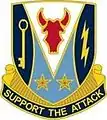 Special Troops Battalion, 34th Infantry Division
Special Troops Battalion, 34th Infantry Division
"Support the Attack"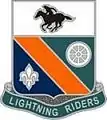 Special Troops Battalion, 35th Infantry Division
Special Troops Battalion, 35th Infantry Division
"Lightning Riders" Special Troops Battalion, 36th Infantry Division
Special Troops Battalion, 36th Infantry Division
"Support through Service"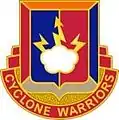 Special Troops Battalion, 38th Infantry Division
Special Troops Battalion, 38th Infantry Division
"Cyclone Warriors" Special Troops Battalion, 40th Infantry Division
Special Troops Battalion, 40th Infantry Division
"Sostenga el Combate" Special Troops Battalion, 42nd Infantry Division
Special Troops Battalion, 42nd Infantry Division
"Never Forget" Special Troops Battalion, 82nd Airborne Division
Special Troops Battalion, 82nd Airborne Division
"Courage Commitment"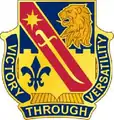 Special Troops Battalion, 1st Brigade Combat Team, 1st Infantry Division
Special Troops Battalion, 1st Brigade Combat Team, 1st Infantry Division
"Victory through Versatility"
 Special Troops Battalion, 1st Brigade Combat Team, 82nd Airborne Division
Special Troops Battalion, 1st Brigade Combat Team, 82nd Airborne Division
"Strength, Honor, Diversity"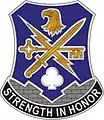 Special Troops Battalion, 1st Brigade Combat Team, 101st Airborne Division
Special Troops Battalion, 1st Brigade Combat Team, 101st Airborne Division
"Strength in Honor"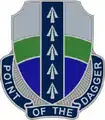 Special Troops Battalion, 2nd Brigade Combat Team, 1st Infantry Division
Special Troops Battalion, 2nd Brigade Combat Team, 1st Infantry Division
"Point of the Dagger" Special Troops Battalion, 2nd Brigade Combat Team, 1st Cavalry Division
Special Troops Battalion, 2nd Brigade Combat Team, 1st Cavalry Division
"Perstatum Fortitudo Bellatoris" Special Troops Battalion, 2nd Brigade Combat Team, 10th Mountain Division
Special Troops Battalion, 2nd Brigade Combat Team, 10th Mountain Division
"Vigor et Dignitas" Special Troops Battalion, 2nd Brigade Combat Team, 82nd Airborne Division
Special Troops Battalion, 2nd Brigade Combat Team, 82nd Airborne Division
"From skies of blue" Special Troops Battalion, 2nd Brigade Combat Team, 101st Airborne Division
Special Troops Battalion, 2nd Brigade Combat Team, 101st Airborne Division
"One Strike One Team" Special Troops Battalion, 3rd Brigade Combat Team, 1st Infantry Division
Special Troops Battalion, 3rd Brigade Combat Team, 1st Infantry Division
"Valiant Warriors" Special Troops Battalion, 3rd Brigade Combat Team, 10th Mountain Division
Special Troops Battalion, 3rd Brigade Combat Team, 10th Mountain Division
"Fortitudo et Artis" Special Troops Battalion, 3rd Brigade Combat Team, 82nd Airborne Division
Special Troops Battalion, 3rd Brigade Combat Team, 82nd Airborne Division
"Firmus Vigilo Validus" Special Troops Battalion, 3rd Brigade Combat Team, 101st Airborne Division
Special Troops Battalion, 3rd Brigade Combat Team, 101st Airborne Division
"Belong to the Warrior" Special Troops Battalion, 4th Brigade Combat Team, 1st Infantry Division
Special Troops Battalion, 4th Brigade Combat Team, 1st Infantry Division
"Trained and Ready" Special Troops Battalion, 4th Brigade Combat Team, 82nd Airborne Division
Special Troops Battalion, 4th Brigade Combat Team, 82nd Airborne Division
"Swift Agile and Lethal" Special Troops Battalion, 4th Brigade Combat Team, 101st Airborne Division
Special Troops Battalion, 4th Brigade Combat Team, 101st Airborne Division
"Pergite Proelium"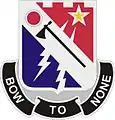 Special Troops Battalion, 37th Infantry Brigade Combat Team
Special Troops Battalion, 37th Infantry Brigade Combat Team
"Bow to None" Special troops Battalion, 39th Infantry Brigade Combat Team
Special troops Battalion, 39th Infantry Brigade Combat Team
"Utrinique Paratus"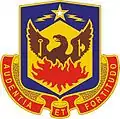 Special Troops Battalion, 173rd Airborne Brigade Combat Team
Special Troops Battalion, 173rd Airborne Brigade Combat Team
"Audentia et Fortitudo" (Courage and Strength)
Support
 United States Army Sustainment Command
United States Army Sustainment Command
"On The Line"
 2nd Support Command
2nd Support Command
"Excel All" 7th Army Support Command
7th Army Support Command
"Support"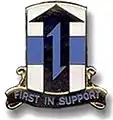 21st Theater Sustainment Command and 1st Support Brigade (Obsolete)
21st Theater Sustainment Command and 1st Support Brigade (Obsolete)
"First in Support" 377th Theater Sustainment Command
377th Theater Sustainment Command
"Can Do Anytime Anywhere" 19th Sustainment Command (Expeditionary)
19th Sustainment Command (Expeditionary)
"Mission Flexibility" 103rd Sustainment Command (Expeditionary)
103rd Sustainment Command (Expeditionary)
"We Succeed" 135th Sustainment Command (Expeditionary)
135th Sustainment Command (Expeditionary)
"Sustaining Freedom" 143rd Sustainment Command (Expeditionary)
143rd Sustainment Command (Expeditionary)
"Movement Brings Victory" 593rd Expeditionary Sustainment Command
593rd Expeditionary Sustainment Command
"Rest Assured" 8th Infantry Division Trains
8th Infantry Division Trains
"Depend on Us" 8th Infantry Division Support Command (DISCOM)
8th Infantry Division Support Command (DISCOM)
"Depend on Us" 3rd Support Brigade
3rd Support Brigade
"Totis Viribus" 101st Corps Support Group
101st Corps Support Group
"Simuleximus" 167th Support Group
167th Support Group
"Links of Strength".png.webp) 201st Support Group
201st Support Group
"Providing the Keys to Victory" 1st Infantry Division Sustainment Brigade
1st Infantry Division Sustainment Brigade
"Sustain to Victory" 1st Cavalry Division Sustainment Brigade
1st Cavalry Division Sustainment Brigade
"Wagonmaster Brigade" 1st Armored Division Sustainment Brigade
1st Armored Division Sustainment Brigade 3rd Infantry Division Sustainment Brigade
3rd Infantry Division Sustainment Brigade
"Heart of the Rock"
 10th Mountain Division Sustainment Brigade
10th Mountain Division Sustainment Brigade
"Supporting the Climb" 15th Sustainment Brigade
15th Sustainment Brigade
"Wagonmaster Brigade" 38th Sustainment Brigade
38th Sustainment Brigade
"Never Quit" 43rd Sustainment Brigade
43rd Sustainment Brigade
"Rough Riders" 55th Sustainment Brigade
55th Sustainment Brigade
"Sustain the Force, Secure the Victory" 82nd Sustainment Brigade
82nd Sustainment Brigade
"Supporting Freedom" 89th Sustainment Brigade
89th Sustainment Brigade
"Above the Rest"
 113th Sustainment Brigade
113th Sustainment Brigade
"First Line"


 403rd Army Field Support Brigade
403rd Army Field Support Brigade
"Maintaining the Warriors"
 2nd Brigade Support Battalion
2nd Brigade Support Battalion
"Mobile Sum"
(We Move) 3rd Brigade Support Battalion
3rd Brigade Support Battalion
"Roulons Et Passons" 4th Brigade Support Battalion
4th Brigade Support Battalion
"Strength Through Support" 10th Brigade Support Battalion
10th Brigade Support Battalion
"Proud To Support" 13th Combat Sustainment Support Battalion
13th Combat Sustainment Support Battalion
"Strength & Support" 15th Brigade Support Battalion
15th Brigade Support Battalion
"Gamblers" 17th Combat Sustainment Support Battalion
17th Combat Sustainment Support Battalion
"Ready Reliable Exact" 25th Brigade Support Battalion
25th Brigade Support Battalion
"Without Delay" 35th Combat Sustainment Support Battalion
35th Combat Sustainment Support Battalion
"Means to Sustain" 39th Brigade Support Battalion
39th Brigade Support Battalion
"Support Spirit Success" 40th Brigade Support Battalion
40th Brigade Support Battalion
"Forward with the Best" 46th Aviation Support Battalion
46th Aviation Support Battalion 55th Support Battalion
55th Support Battalion
"Complete Support" 64th Brigade Support Battalion
64th Brigade Support Battalion
"Life Blood of the Army" 68th Combat Sustainment Support Battalion
68th Combat Sustainment Support Battalion
"Wheels of Distinction" 70th Brigade Support Battalion
70th Brigade Support Battalion
"Vis per Sustentationem" 72nd Brigade Support Battalion
72nd Brigade Support Battalion
"Security and Reliability" 82nd Brigade Support Battalion
82nd Brigade Support Battalion
"Subsidium Sine Qua Non" 87th Combat Sustainment Support Battalion
87th Combat Sustainment Support Battalion
"Base of the Pyramid" 88th Brigade Support Battalion
88th Brigade Support Battalion
"Give Way" 90th Aviation Support Battalion
90th Aviation Support Battalion
"Deliver" 96th Aviation Support Battalion
96th Aviation Support Battalion
"Provision Made" 100th Brigade Support Battalion
100th Brigade Support Battalion
"We will support" 101st Brigade Support Battalion
101st Brigade Support Battalion
"Portons Les Fardeaux"
(Let Us Carry The Burdens)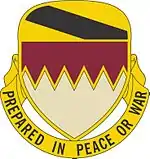 115th Brigade Support Battalion
115th Brigade Support Battalion
"Prepared in Peace and War"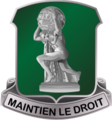 122nd Aviation Support Battalion
122nd Aviation Support Battalion
"Maintien Le Droit" 123rd Brigade Support Battalion
123rd Brigade Support Battalion
"Forging Onward" 125th Brigade Support Battalion
125th Brigade Support Battalion
"Bulldog Support" 127th Aviation Support Battalion
127th Aviation Support Battalion
"Iron Eagle Support" 132nd Brigade Support Battalion
132nd Brigade Support Battalion
"Supply, Service, Support" 134th Brigade Support Battalion
134th Brigade Support Battalion
"Adsidue Supplere" 141st Brigade Support Battalion
141st Brigade Support Battalion
"Da Mihi Locum"
(Give To Me A Place) 142nd Combat Sustainment Support Battalion
142nd Combat Sustainment Support Battalion
"Support for Strength" 145th Brigade Support Battalion
145th Brigade Support Battalion
"Born Of Pride" 147th Brigade Support Battalion
147th Brigade Support Battalion
"Auxilium Contentibus" 148th Brigade Support Battalion
148th Brigade Support Battalion
"Hone The Cutting Edge" 167th Combat Sustainment Support Battalion
167th Combat Sustainment Support Battalion
"Links of Strength" 168th Support Battalion
168th Support Battalion
"Pursuit of Excellence" 173rd Brigade Support Battalion
173rd Brigade Support Battalion
"To Our Utmost" 186th Brigade Support Battalion
186th Brigade Support Battalion
"We Serve and Support" 187th Forward Support Battalion
187th Forward Support Battalion
"Support with Pride" 188th Brigade Support Battalion
188th Brigade Support Battalion 193rd Combat Sustainment Support Battalion
193rd Combat Sustainment Support Battalion
"Strength in Diversity" 201st Brigade Support Battalion
201st Brigade Support Battalion
"In Omnia Promptus" 204th Brigade Support Battalion
204th Brigade Support Battalion
"Rough Riders" 209th Aviation Support Battalion
209th Aviation Support Battalion
"Service Behind The Sword" 210th Brigade Support Battalion
210th Brigade Support Battalion
"Fortes Defensores Vitae" 215th Brigade Support Battalion
215th Brigade Support Battalion
"No Task too Tough" 225th Brigade Support Battalion
225th Brigade Support Battalion
"Warrior Support" 230th Brigade Support Battalion
230th Brigade Support Battalion
"In Support of Hickory" 232nd Combat Sustainment Support Battalion
232nd Combat Sustainment Support Battalion
"Satisfy the Need" 237th Brigade Support Battalion
237th Brigade Support Battalion
"Fidelis et Paratus"
(Faithful & Ready) 264th Support Battalion (Combat Sustainment)
264th Support Battalion (Combat Sustainment)
"Support for Victory" 275th Combat Sustainment Support Battalion
275th Combat Sustainment Support Battalion
"The Usual Unusually Well" 277th Aviation Support Battalion
277th Aviation Support Battalion
"Service for Freedom and Liberty" 296th Brigade Support Battalion
296th Brigade Support Battalion
"Frontline Support" 299th Brigade Support Battalion
299th Brigade Support Battalion
"On Call to Serve" 307th Brigade Support Battalion
307th Brigade Support Battalion
"Cura Et Industria"
(By Care and Industry) 327th Brigade Support Battalion
327th Brigade Support Battalion
"Fidelis et Paratus" 308th Brigade Support Battalion
308th Brigade Support Battalion
"Pride in Performance" 325th Brigade Support Battalion
325th Brigade Support Battalion 334th Brigade Support Battalion
334th Brigade Support Battalion
"Supporting The Attack" 348th Support Battalion
348th Support Battalion
"Vindico Laedo"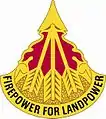 391st Support Battalion
391st Support Battalion
"Firepower for Landpower" 404th Brigade Support Battalion
404th Brigade Support Battalion
"Iron Eagle Providers" 407th Brigade Support Battalion
407th Brigade Support Battalion
"Supply is Strength" 412th Aviation Support Battalion
412th Aviation Support Battalion
"Professionals" 426th Brigade Support Battalion
426th Brigade Support Battalion
"To The Task" 429th Support Battalion
429th Support Battalion
"Support Is Survival" 449th Aviation Support Battalion
449th Aviation Support Battalion
"Fix Forward" 524th Brigade Support Battalion
524th Brigade Support Battalion
"Make A Way" 526th Brigade Support Battalion
526th Brigade Support Battalion
"Best by Performance" 528th Brigade Support Battalion
528th Brigade Support Battalion
"We Support to the Utmost"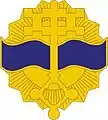 541st Combat Sustainment Support Battalion
541st Combat Sustainment Support Battalion 548th Combat Sustainment Support Battalion
548th Combat Sustainment Support Battalion
"Supporting The Sword" 563rd Aviation Support Battalion
563rd Aviation Support Battalion
"Keep Them Fighting" 589th Brigade Support Battalion
589th Brigade Support Battalion
"First with Service" 601st Aviation Support Battalion
601st Aviation Support Battalion
"Dragon Support" 602nd Aviation Support Battalion
602nd Aviation Support Battalion
"To Mend Broken Wings" 603rd Aviation Support Battalion
603rd Aviation Support Battalion
"No Mission Denied" 615th Aviation Support Battalion
615th Aviation Support Battalion
"Forge the Edge" 626th Brigade Support Battalion
626th Brigade Support Battalion
"Assurgam" 628th Aviation Support Battalion
628th Aviation Support Battalion
"Without Compromise"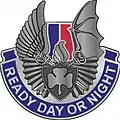 638th Aviation Support Battalion
638th Aviation Support Battalion
"Ready Day Or Night" 640th Support Battalion
640th Support Battalion
"Forward and Above" 642nd Aviation Support Battalion
642nd Aviation Support Battalion
"Servitium" 700th Brigade Support Battalion
700th Brigade Support Battalion
"Tradition Pride Support"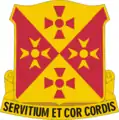 701st Brigade Support Battalion
701st Brigade Support Battalion
"Servitium et Cor Cordis"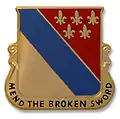 702nd Main Support Battalion
702nd Main Support Battalion
"Mend the Broken Sword" 703rd Brigade Support Battalion
703rd Brigade Support Battalion
"Maintain" 704th Brigade Support Battalion
704th Brigade Support Battalion
"Skilled and Steadfast" 710th Brigade Support Battalion
710th Brigade Support Battalion
"Mobilitas Et Virtus" 724th Main Support Battalion
724th Main Support Battalion
"Strength in Service" 725th Brigade Support Battalion
725th Brigade Support Battalion
"Service to the Line" 782nd Brigade Support Battalion
782nd Brigade Support Battalion
"Peritia Cognita" 834th Aviation Support Battalion
834th Aviation Support Battalion
"Winged Warriors Support" 927th Combat Service Support Battalion
927th Combat Service Support Battalion
"We Support the Force" 935th Aviation Support Battalion
935th Aviation Support Battalion
"You Move, We Support" 3643rd Brigade Support Battalion
3643rd Brigade Support Battalion
"Sustaining Thunder"


 2-356th Logistics Support Battalion
2-356th Logistics Support Battalion
"Boutez en Avant"
(Push Forward) 2-411th Logistics Support Battalion
2-411th Logistics Support Battalion
"Paratus Ferire"
(Ready to Strike)
Transportation
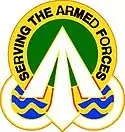 United States Army Surface Deployment and Distribution Command
United States Army Surface Deployment and Distribution Command
"Serving the Armed Forces" 7th Transportation Brigade
7th Transportation Brigade
"Resolute" 107th Transportation Brigade
107th Transportation Brigade
"Dedication" 8th Transportation Group
8th Transportation Group
"Professionals" 9th Traffic Regulation Group
9th Traffic Regulation Group
"Ninth Traffic" 10th Transportation Group
10th Transportation Group
"Mobility" 37th Transportation Group
37th Transportation Group
"Semper Rotans"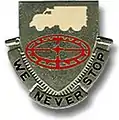 49th Transportation Center
49th Transportation Center
"We Never Stop" 2nd Military Railway Service Battalion
2nd Military Railway Service Battalion 4th Transportation Battalion
4th Transportation Battalion
"Driving For Peace" 4th Transportation Battalion (obsolete)
4th Transportation Battalion (obsolete)
"Work War Win" 6th Transportation Battalion
6th Transportation Battalion
"The Doers"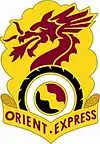 7th Transportation Battalion
7th Transportation Battalion
"Orient Express' 10th Transportation Battalion
10th Transportation Battalion
"Portal to Victory" 11th Transportation Battalion
11th Transportation Battalion
"Preparedness and Dependability" 14th Transportation Battalion
14th Transportation Battalion
"Reliable" 205th Transportation Battalion
205th Transportation Battalion
"Combat Mobility" 24th Transportation Battalion
24th Transportation Battalion
"Trucking Along" 25th Transportation Battalion
25th Transportation Battalion
"Consider it Done" 27th Transportation Battalion
27th Transportation Battalion
"Geared to Fit"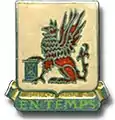 28th Transportation Battalion
28th Transportation Battalion
"En Temps" 35th Transportation Battalion
35th Transportation Battalion
"The Queen's Chariots" 38th Transportation Battalion
38th Transportation Battalion
"Esiquitas" 39th Transportation Battalion
39th Transportation Battalion
"We'll Carry You" 41st Transportation Battalion
41st Transportation Battalion
"Sustinere" 49th Transportation Battalion
49th Transportation Battalion
"We Never Stop"

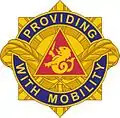 57th Transportation Battalion
57th Transportation Battalion
"Providing with Mobility" 58th Transportation Battalion
58th Transportation Battalion 71st Transportation Battalion
71st Transportation Battalion
"Full Speed Ahead" 106th Transportation Battalion
106th Transportation Battalion
"Primus Inter Pares" 106th Transportation Battalion (obsolete)
106th Transportation Battalion (obsolete)
"Primus Inter Pares" 180th Transportation Battalion
180th Transportation Battalion
"Rex Viae" 181st Transportation Battalion
181st Transportation Battalion
"Any Time, Any Task" 181st Transportation Battalion (obsolete)
181st Transportation Battalion (obsolete)
"Anytime, Anywhere" 205th Transportation Battalion
205th Transportation Battalion 217th Transportation Battalion
217th Transportation Battalion
"Support Above All Else" 228th Transportation Battalion
228th Transportation Battalion
"Drive to Victory" 246th Transportation Battalion
246th Transportation Battalion
"Wolf Hounds" 354th Transportation Battalion
354th Transportation Battalion
"Service, Honor" 385th Transportation Battalion
385th Transportation Battalion
"We Give Our All" 450th Transportation Battalion
450th Transportation Battalion
"Strength Through Movement" 483rd Transportation Battalion
483rd Transportation Battalion
"Imperat Aequor" 718th Transportation Battalion
718th Transportation Battalion
"Servitium Omnia Vincit" 734th Transportation Battalion
734th Transportation Battalion
"Prairie Steel" 821st Transportation Battalion
821st Transportation Battalion
"The Wheels with Pride" 1030th Transportation Battalion
1030th Transportation Battalion 1144th Transportation Battalion
1144th Transportation Battalion
"How Much How Far"
See also
- Shoulder sleeve insignia – which describes the unit formation patches worn on the upper left and right sleeves below the shoulder hem.
.pdf.jpg.webp)
References
- Arthur DuBois, Heraldic Branch O.Q.M.G., The Quartermaster Review – September–October 1954. Archived 2012-02-05 at the Wayback Machine Found at US Army Quartermaster Foundation website.
- Wear and Appearance of Army Uniforms and Insignia (PDF). U.S. Army. March 2014. Department of the Army Regulation 670-1.
- Guide to the Wear and Appearance of Army Uniforms and Insignia (PDF). U.S. Army. July 2015. Department of the Army Pamphlet 670-1. Archived from the original (PDF) on 2014-05-06.
- "FAQs ~ Organizational Insignia". The Institute of Heraldry, U.S. Army.
- Sawicki, James A. Infantry Regiments of the U.S. Army. Wyvern Publications, 1981. ISBN 0-9602404-3-8.
- "Walter Reed National Military Medical Center, US Army Element". Institute of Heraldry. Office of the Administrative Assistant to the Secretary of the Army. 18 July 2011. Retrieved 19 May 2013.
Further reading
- The Institute of Heraldry, Heraldic Services Handbook, 1997
- Heralding Devices, Soldiers Magazine, January 1985
